Sierra Wireless HL7718 HL7718 module User Manual AirPrime HL77xx Product Technical Specification
Sierra Wireless Inc. HL7718 module AirPrime HL77xx Product Technical Specification
User manual
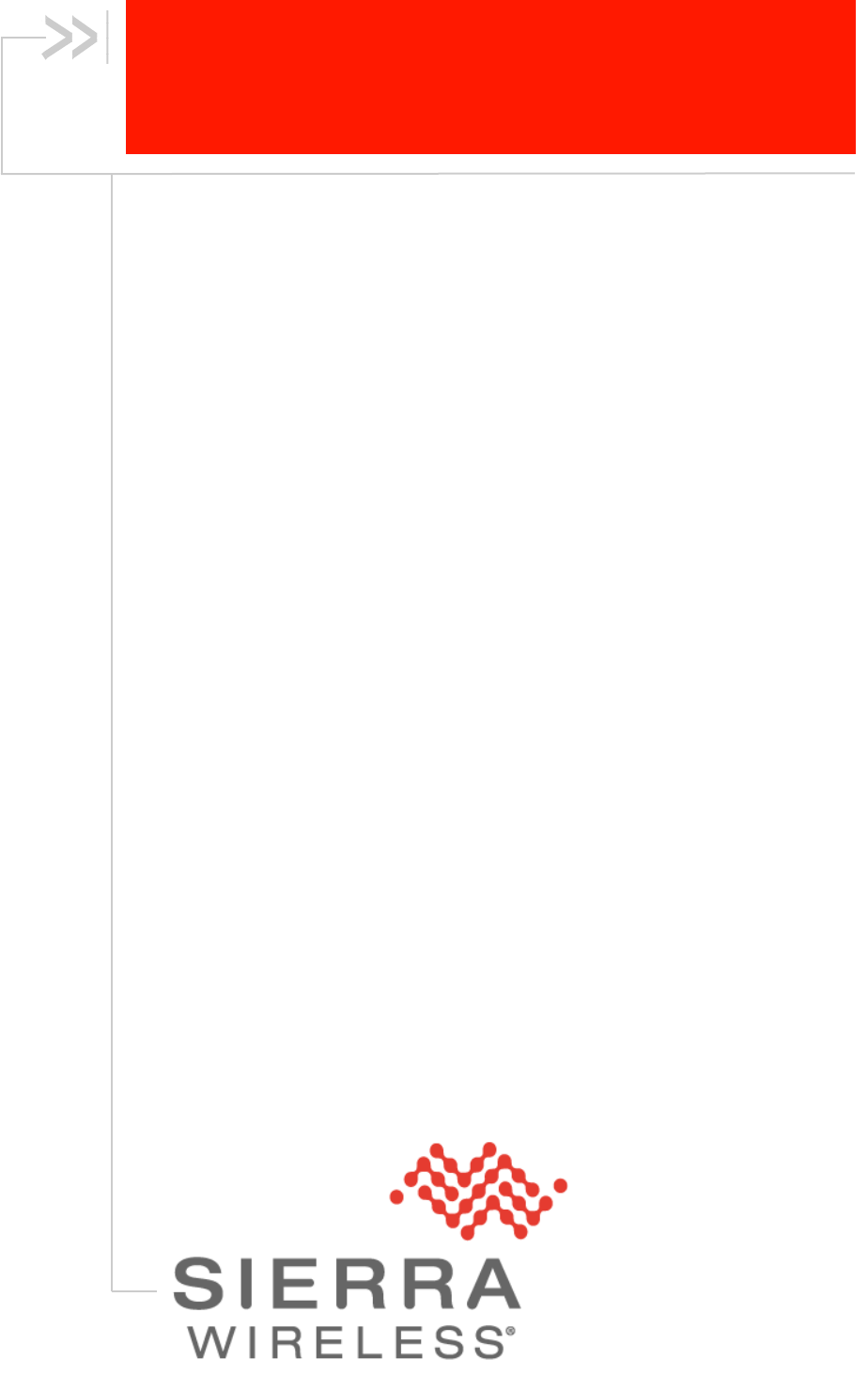
Product Technical Specification
AirPrime HL77xx
41110555
1.0
November 01, 2017

41110555 Rev 1.0 November 01, 2017 2
Product Technical Specification
Important Notice
Due to the nature of wireless communications, transmission and reception of data can never be
guaranteed. Data may be delayed, corrupted (i.e., have errors) or be totally lost. Although significant
delays or losses of data are rare when wireless devices such as the Sierra Wireless modem are used
in a normal manner with a well-constructed network, the Sierra Wireless modem should not be used
in situations where failure to transmit or receive data could result in damage of any kind to the user or
any other party, including but not limited to personal injury, death, or loss of property. Sierra Wireless
accepts no responsibility for damages of any kind resulting from delays or errors in data transmitted or
received using the Sierra Wireless modem, or for failure of the Sierra Wireless modem to transmit or
receive such data.
Safety and Hazards
Do not operate the Sierra Wireless modem in areas where cellular modems are not advised without
proper device certifications. These areas include environments where cellular radio can interfere such
as explosive atmospheres, medical equipment, or any other equipment which may be susceptible to
any form of radio interference. The Sierra Wireless modem can transmit signals that could interfere
with this equipment. Do not operate the Sierra Wireless modem in any aircraft, whether the aircraft is
on the ground or in flight. In aircraft, the Sierra Wireless modem MUST BE POWERED OFF. When
operating, the Sierra Wireless modem can transmit signals that could interfere with various onboard
systems.
Note: Some airlines may permit the use of cellular phones while the aircraft is on the ground and the door
is open. Sierra Wireless modems may be used at this time.
The driver or operator of any vehicle should not operate the Sierra Wireless modem while in control of
a vehicle. Doing so will detract from the driver or operator’s control and operation of that vehicle. In
some states and provinces, operating such communications devices while in control of a vehicle is an
offence.
Limitations of Liability
This manual is provided “as is”. Sierra Wireless makes no warranties of any kind, either expressed or
implied, including any implied warranties of merchantability, fitness for a particular purpose, or
noninfringement. The recipient of the manual shall endorse all risks arising from its use.
The information in this manual is subject to change without notice and does not represent a
commitment on the part of Sierra Wireless. SIERRA WIRELESS AND ITS AFFILIATES
SPECIFICALLY DISCLAIM LIABILITY FOR ANY AND ALL DIRECT, INDIRECT, SPECIAL,
GENERAL, INCIDENTAL, CONSEQUENTIAL, PUNITIVE OR EXEMPLARY DAMAGES INCLUDING,
BUT NOT LIMITED TO, LOSS OF PROFITS OR REVENUE OR ANTICIPATED PROFITS OR
REVENUE ARISING OUT OF THE USE OR INABILITY TO USE ANY SIERRA WIRELESS
PRODUCT, EVEN IF SIERRA WIRELESS AND/OR ITS AFFILIATES HAS BEEN ADVISED OF THE
POSSIBILITY OF SUCH DAMAGES OR THEY ARE FORESEEABLE OR FOR CLAIMS BY ANY
THIRD PARTY.
Notwithstanding the foregoing, in no event shall Sierra Wireless and/or its affiliates aggregate liability
arising under or in connection with the Sierra Wireless product, regardless of the number of events,
occurrences, or claims giving rise to liability, be in excess of the price paid by the purchaser for the
Sierra Wireless product.

41110555 Rev 1.0 November 01, 2017 3
Product Technical Specification
Patents
This product may contain technology developed by or for Sierra Wireless Inc.
This product is manufactured or sold by Sierra Wireless Inc. or its affiliates under one or more patents
licensed from MMP Portfolio Licensing.
Copyright
© 2017 Sierra Wireless. All rights reserved.
Trademarks
Sierra Wireless®, AirPrime®, AirLink®, AirVantage®, WISMO®, ALEOS® and the Sierra Wireless and
Open AT logos are registered trademarks of Sierra Wireless, Inc. or one of its subsidiaries.
Watcher® is a registered trademark of NETGEAR, Inc., used under license.
Windows® and Windows Vista® are registered trademarks of Microsoft Corporation.
Macintosh® and Mac OS X® are registered trademarks of Apple Inc., registered in the U.S. and other
countries.
QUALCOMM® is a registered trademark of QUALCOMM Incorporated. Used under license.
Other trademarks are the property of their respective owners.
Contact Information
Sales information and technical support,
including warranty and returns
Web: sierrawireless.com/company/contact-us/
Global toll-free number: 1-877-687-7795
6:00 am to 5:00 pm PST
Corporate and product information
Web: sierrawireless.com

41110555 Rev 1.0 November 01, 2017 4
Product Technical Specification
Document History
Version
Date
Updates
1.0
November 01, 2017
Creation

41110555 Rev 1.0 November 01, 2017 5
Contents
1. INTRODUCTION ................................................................................................ 10
1.1. Common Flexible Form Factor (CF3) ................................................................................ 10
1.2. Physical Dimensions ......................................................................................................... 11
1.3. General Features ............................................................................................................... 11
1.4. Architecture........................................................................................................................ 13
1.5. Interfaces ........................................................................................................................... 13
1.6. Connection Interface ......................................................................................................... 14
1.7. ESD ................................................................................................................................... 15
1.8. Environmental and Certifications ....................................................................................... 15
1.8.1. Environmental Specifications ................................................................................... 15
1.8.2. Regulatory ................................................................................................................ 16
1.8.3. RoHS Directive Compliant ....................................................................................... 16
1.8.4. Disposing of the Product .......................................................................................... 16
1.9. References ........................................................................................................................ 16
2. PAD DEFINITION ............................................................................................... 17
2.1. Pad Types .......................................................................................................................... 21
2.2. Pad Configuration (Top View, Through Module) ............................................................... 22
3. DETAILED INTERFACE SPECIFICATIONS ..................................................... 23
3.1. Power Supply..................................................................................................................... 23
3.2. Current Consumption ........................................................................................................ 24
3.3. VGPIO ............................................................................................................................... 25
3.4. USIM Interface ................................................................................................................... 25
3.4.1. UIM1_DET ............................................................................................................... 26
3.5. USB Interface .................................................................................................................... 26
3.6. Electrical Information for Digital I/O ................................................................................... 27
3.7. General Purpose Input/Output (GPIO) .............................................................................. 28
3.8. Main Serial Link (UART1) .................................................................................................. 28
3.9. Power On Signal (PWR_ON_N) ........................................................................................ 29
3.10. Reset Signal (RESET_IN_N) ............................................................................................. 30
3.11. Analog to Digital Converter (ADC)..................................................................................... 31
3.12. Clock Interface ................................................................................................................... 32
3.13. Debug Interface ................................................................................................................. 32
3.14. JTAG Interface................................................................................................................... 32
3.15. Wake Up Signal (WAKE-UP) ............................................................................................. 33
3.16. Fast Shutdown Signal (FAST_SHUTDOWN) .................................................................... 34
3.17. PWM .................................................................................................................................. 34

41110555 Rev 1.0 November 01, 2017 6
Product Technical Specification
3.18. RF Interface ....................................................................................................................... 35
3.18.1. RF Connection ......................................................................................................... 35
3.18.2. RF Performances ..................................................................................................... 35
4. MECHANICAL DRAWINGS ............................................................................... 37
5. DESIGN GUIDELINES ....................................................................................... 39
5.1. Power-Up Sequence ......................................................................................................... 39
5.2. Module Switch-Off ............................................................................................................. 39
5.3. Sleep Mode Management ................................................................................................. 39
5.4. Power Supply Design ........................................................................................................ 40
5.5. Power On Connection Examples....................................................................................... 40
5.6. USIM1 Application ............................................................................................................. 41
5.7. EMC and ESD Guidelines for USIM1 Card ....................................................................... 41
5.8. ESD Guidelines for USB .................................................................................................... 42
5.9. PWM .................................................................................................................................. 42
6. RELIABILITY SPECIFICATION (TBC) .............................................................. 44
6.1. Reliability Compliance ....................................................................................................... 44
6.2. Reliability Prediction Model ............................................................................................... 44
6.2.1. Life Stress Test ........................................................................................................ 44
6.2.2. Environmental Resistance Stress Tests .................................................................. 45
6.2.3. Corrosive Resistance Stress Tests ......................................................................... 45
6.2.4. Thermal Resistance Cycle Stress Tests .................................................................. 46
6.2.5. Mechanical Resistance Stress Tests ....................................................................... 47
6.2.6. Handling Resistance Stress Tests ........................................................................... 48
7. FCC LEGAL INFORMATION ............................................................................. 49
8. ORDERING INFORMATION .............................................................................. 51
9. TERMS AND ABBREVIATIONS ........................................................................ 52

41110555 Rev 1.0 November 01, 2017 7
List of Figures
Figure 1. Architecture Overview ..................................................................................................... 13
Figure 2. Mechanical Overview (Top View and Bottom View) ....................................................... 14
Figure 3. Actual Module (Top View) ............................................................................................... 14
Figure 4. Actual Module (Bottom View) .......................................................................................... 14
Figure 5. Pad Configuration ............................................................................................................ 22
Figure 6. PWR_ON_N and PWR_OFF Sequence ......................................................................... 30
Figure 7. JTAG Timing Waveform .................................................................................................. 33
Figure 8. Relative Timing for the PWM Output ............................................................................... 34
Figure 9. Mechanical Drawing ........................................................................................................ 37
Figure 10. Dimensions and Footprint Drawing ................................................................................. 38
Figure 11. Voltage Limiter Example ................................................................................................. 40
Figure 12. PWR_ON_N Connection Example with Switch ............................................................... 40
Figure 13. PWR_ON_N Connection Example with an Open Collector Transistor ........................... 40
Figure 14. Design Application with USIM1 Slot ................................................................................ 41
Figure 15. EMC and ESD Components Close to the USIM1. .......................................................... 41
Figure 16. ESD Protection for USB .................................................................................................. 42
Figure 17. Example of an LED Driven by the PWM0 Output ........................................................... 42
Figure 18. Example of a BUZZER Driven by the PWM0 Output ...................................................... 43

41110555 Rev 1.0 November 01, 2017 8
List of Tables
Table 1. Supported Bands/Connectivity ........................................................................................ 10
Table 2. General Features ............................................................................................................ 11
Table 3. ESD Specifications .......................................................................................................... 15
Table 4. Environmental Specifications .......................................................................................... 15
Table 5. Pin Definition ................................................................................................................... 17
Table 6. Pad Type Codes .............................................................................................................. 21
Table 7. Power Supply Pad Description ........................................................................................ 23
Table 8. Power Supply Electrical Characteristics .......................................................................... 23
Table 9. Low Current Consumption Mode ..................................................................................... 24
Table 10. Current Consumption ..................................................................................................... 24
Table 11. VGPIO Pad Description ................................................................................................... 25
Table 12. VGPIO Electrical Characteristics ..................................................................................... 25
Table 13. USIM1 Pad Description ................................................................................................... 26
Table 14. USIM1 Electrical Characteristics ..................................................................................... 26
Table 15. USB Pad Description ....................................................................................................... 26
Table 16. USB Electrical Characteristics ......................................................................................... 27
Table 17. Digital I/O Electrical Characteristics ................................................................................ 27
Table 18. GPIO Pad Description ..................................................................................................... 28
Table 19. UART1 Pad Description .................................................................................................. 28
Table 20. PWR_ON_N Pad Description .......................................................................................... 29
Table 21. PWR_ON_N Electrical Characteristics ........................................................................... 29
Table 22. RESET_IN_N Pad Description ........................................................................................ 30
Table 23. RESET_IN_N Electrical Characteristics .......................................................................... 31
Table 24. ADC Pad Description ...................................................................................................... 31
Table 25. ADC Electrical Characteristics ........................................................................................ 31
Table 26. Clock Interface Pad Description ...................................................................................... 32
Table 27. Software Trace Pad Description...................................................................................... 32
Table 28. JTAG Pad Description ..................................................................................................... 32
Table 29. JTAG Electrical Characteristics ....................................................................................... 33
Table 30. WAKE-UP Pad Description ............................................................................................. 33
Table 31. WAKE-UP Electrical Characteristics ............................................................................... 34
Table 32. FAST_SHUTDOWN Pad Description ............................................................................. 34
Table 33. FAST_SHUTDOWN Electrical Characteristics ............................................................... 34
Table 34. PWM Pad Description ..................................................................................................... 35
Table 35. PWM Electrical Characteristics (TBC)............................................................................. 35
Table 36. RF Pad Connection ......................................................................................................... 35
Table 37. Typical RX Sensitivity ...................................................................................................... 36

41110555 Rev 1.0 November 01, 2017 9
Product Technical Specification
Table 38. Standards Conformity ...................................................................................................... 44
Table 39. Life Stress Test................................................................................................................ 44
Table 40. Environmental Resistance Stress Tests ......................................................................... 45
Table 41. Corrosive Resistance Stress Tests ................................................................................. 45
Table 42. Thermal Resistance Cycle Stress Tests ......................................................................... 46
Table 43. Mechanical Resistance Stress Tests .............................................................................. 47
Table 44. Handling Resistance Stress Tests .................................................................................. 48
Table 45. Ordering Information ....................................................................................................... 51
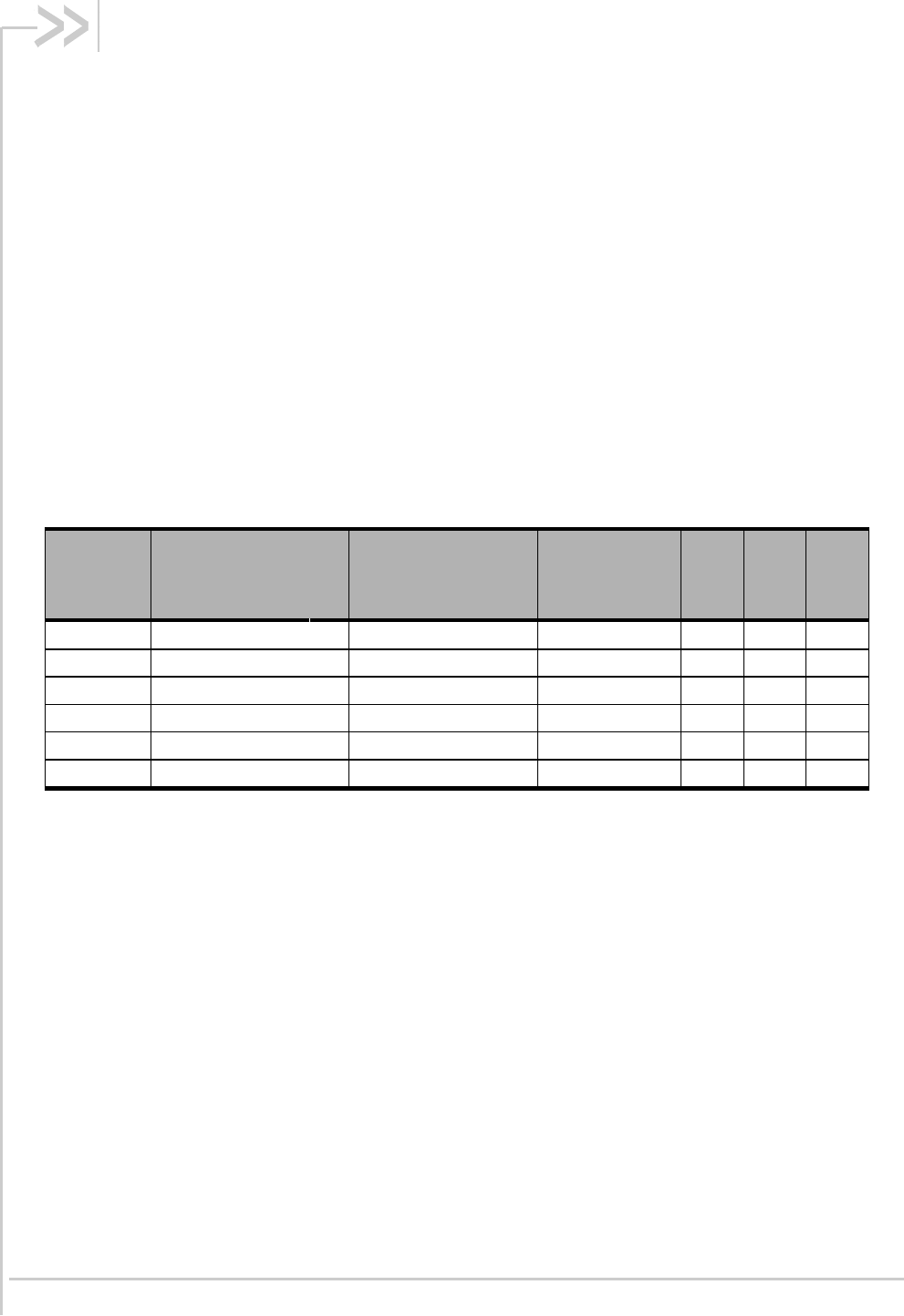
41110555 Rev 1.0 November 01, 2017 10
1. Introduction
This document is the Product Technical Specification for the AirPrime HL77xx series of embedded
modules. It defines the high-level product features and illustrates the interfaces for these features; and
is intended to cover the hardware aspects of the product, including electrical and mechanical.
Variants covered in this document are:
• HL7718
• HL7748
• HL7749
The AirPrime HL77xx modules belong to the AirPrime HL Series from Essential Connectivity Module
family. These are industrial grade Embedded Wireless Modules that provides data connectivity on
LTE networks (as listed in Table 1 Supported Bands/Connectivity).
The AirPrime HL77xx modules support a large variety of interfaces such as USB 2.0, UART, ADC,
USIM interface, PWM and GPIOs to provide customers with the highest level of flexibility in
implementing high-end solutions.
Table 1. Supported Bands/Connectivity
RF Band
Transmit Band (Tx)
Receive Band (Rx)
Maximum
Output Power
HL7718
HL7748
HL7749
LTE B2
1850 to 1910 MHz
1930 to 1990 MHz
23dBm ± 2dBm
✓
LTE B3
1710 to 1785 MHz
1805 to 1880 MHz
23dBm ± 2dBm
✓
LTE B4
1710 to 1755 MHz
2110 to 2155 MHz
23dBm ± 2dBm
✓
LTE B12
699 to 716 MHz
729 to 746 MHz
23dBm ± 2dBm
✓
LTE B13
777 to 787 MHz
746 to 756 MHz
23dBm ± 2dBm
✓
LTE B28
703 to 748 MHz
758 to 803 MHz
23dBm ± 2dBm
✓
1.1. Common Flexible Form Factor (CF3)
The AirPrime HL77xx modules belong to the Common Flexible Form Factor (CF3) family of modules.
This family consists of a series of WWAN modules that share the same mechanical dimensions (same
width and length with varying thicknesses) and footprint. The CF3 form factor provides a unique
solution to a series of problems faced commonly in the WWAN module space as it:
• Accommodates multiple radio technologies (LTE advanced) and band groupings.
• Supports bit-pipe (Essential Module Series) and value add (Smart Module Series) solutions.
• Offers electrical and functional compatibility.
• Provides Direct Mount as well as Socketability depending on customer needs.

41110555 Rev 1.0 November 01, 2017 11
Product Technical Specification
Introduction
1.2. Physical Dimensions
AirPrime HL77xx modules are compact, robust, fully shielded modules with the following dimensions:
• Length: 23 mm
• Width: 22 mm
• Thickness: 2.5 mm
• Weight: 2.6 g
Note: Dimensions specified above are typical values.
1.3. General Features
The table below summarizes the AirPrime HL77xx modules’ features.
Table 2. General Features
Feature
Description
Physical
• Small form factor (146-pad solderable LGA pad) – 23mm x 22mm x 2.5mm
(nominal)
• Metal shield can.
• RF connection pads (RF main interface)
• Baseband signals connection
Electrical
Single or double supply voltage (VBATT and VBATT_PA) – 3.2V – 4.5V
RF
HL7718 (Mono-band LTE):
• LTE B13
HL7748 (Tri-band LTE):
• LTE B2
• LTE B4
• LTE B12
HL7749 (Dual-band LTE):
• LTE B3
• LTE B28
SIM interface
• Only 1.8V support for USIM1
• SIM extraction / hot plug detection
• SIM/USIM support
• Conforms with ETSI UICC Specifications.
• Supports SIM application tool kit with proactive SIM commands
Application interface
• NDIS NIC interface support (Windows 7, Windows 8, Linux)
• MBIM support
• Multiple non-multiplexed USB channel support
• Dial-up networking
• USB selective suspend to maximize power savings
• CMUX multiplexing over UART
• AT command interface – 3GPP 27.007 standard, plus proprietary extended
AT commands

41110555 Rev 1.0 November 01, 2017 12
Product Technical Specification
Introduction
Feature
Description
Protocol stack
Single mode LTE operation:
• LTE FDD, bandwidth 1.4-20 MHz
• System Release: 3GPP Rel. 13
• Category M1 (up to 375 kbit/s in uplink, 300 kbit/s in downlink)
• Max modulation 16 QAM UL/DL
• Intra-frequency and inter-frequency mobility
SMS
• SMS over SGs
• SMS MO and MT
• SMS saving to SIM card or ME storage
• SMS reading from SIM card or ME storage
• SMS sorting
• SMS concatenation
• SMS Status Report
• SMS replacement support
• SMS storing rules (support of AT+CNMI, AT+CNMA)
Connectivity
• Multiple cellular packet data profiles
• Sleep mode for minimum idle power draw
• Mobile-originated PDP context activation / deactivation
• Static and Dynamic IP address. The network may assign a fixed IP address
or dynamically assign one using DHCP (Dynamic Host Configuration
Protocol).
• PDP context type (IPv4, IPv6, IPv4v6). IP Packet Data Protocol context
• RFC1144 TCP/IP header compression
Environmental
Operating temperature ranges (industrial grade):
• Class A: -30°C to +70°C
• Class B: -40°C to +85°C
RTC
Real Time Clock (RTC)
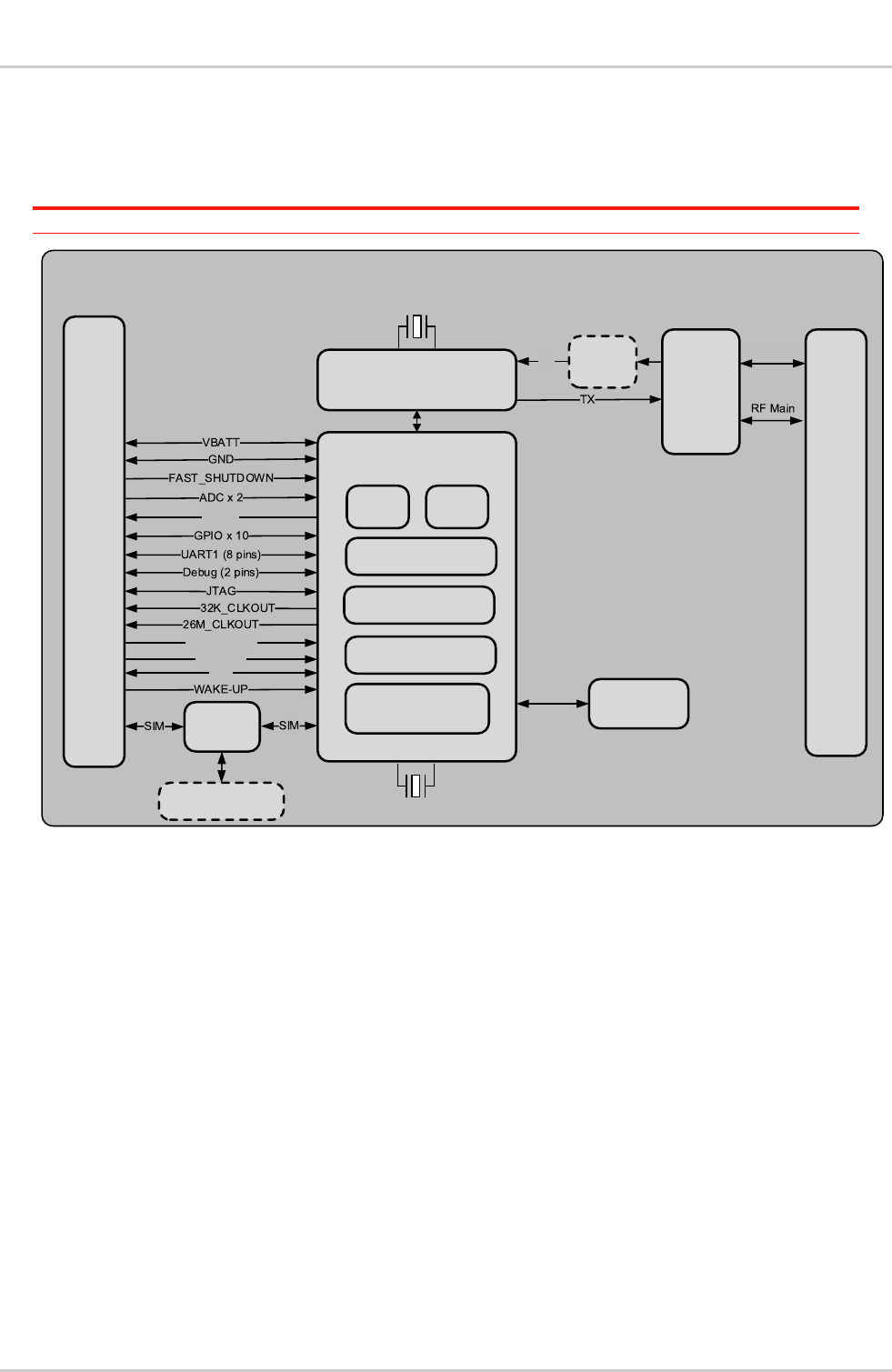
41110555 Rev 1.0 November 01, 2017 13
Product Technical Specification
Introduction
1.4. Architecture
The figure below presents an overview of the AirPrime HL77xx modules’ internal architecture and
external interfaces.
Note: Dotted parts are optional depending on variant.
AirPrime HL7718, HL7748 and HL7749
32.768KHz
VGPIO
RESET_IN_N
LGA-
146
Baseband
MCU DSP
PMU
Analog Baseband
Embedded
SIM
LGA-
146
PWR_ON
SAW
Filters
USB
Front-End
Module
(SAW/PA/
Switch)
RX
RAM Memory
Peripherals
Flash
Memory
SIM
Switch
Transceiver
26MHz
VBATT_PA
Figure 1. Architecture Overview
1.5. Interfaces
The AirPrime HL77xx modules provide the following interfaces and peripheral connectivity:
• 1x - VGPIO (1.8V)
• 1x - 1.8V USIM
• 1x - eUICC/USIM (optional embedded SIM)
• 1x - USB 2.0
• 10x - GPIOs (1 of which has a multiplex)
• 1x - 8-wire UART
• 1x - Active Low POWER ON
• 1x - Active Low RESET
• 2x - ADC
• 2x - System Clock Out (32,768KHz and 26MHz)
• 1x – Debug Interface
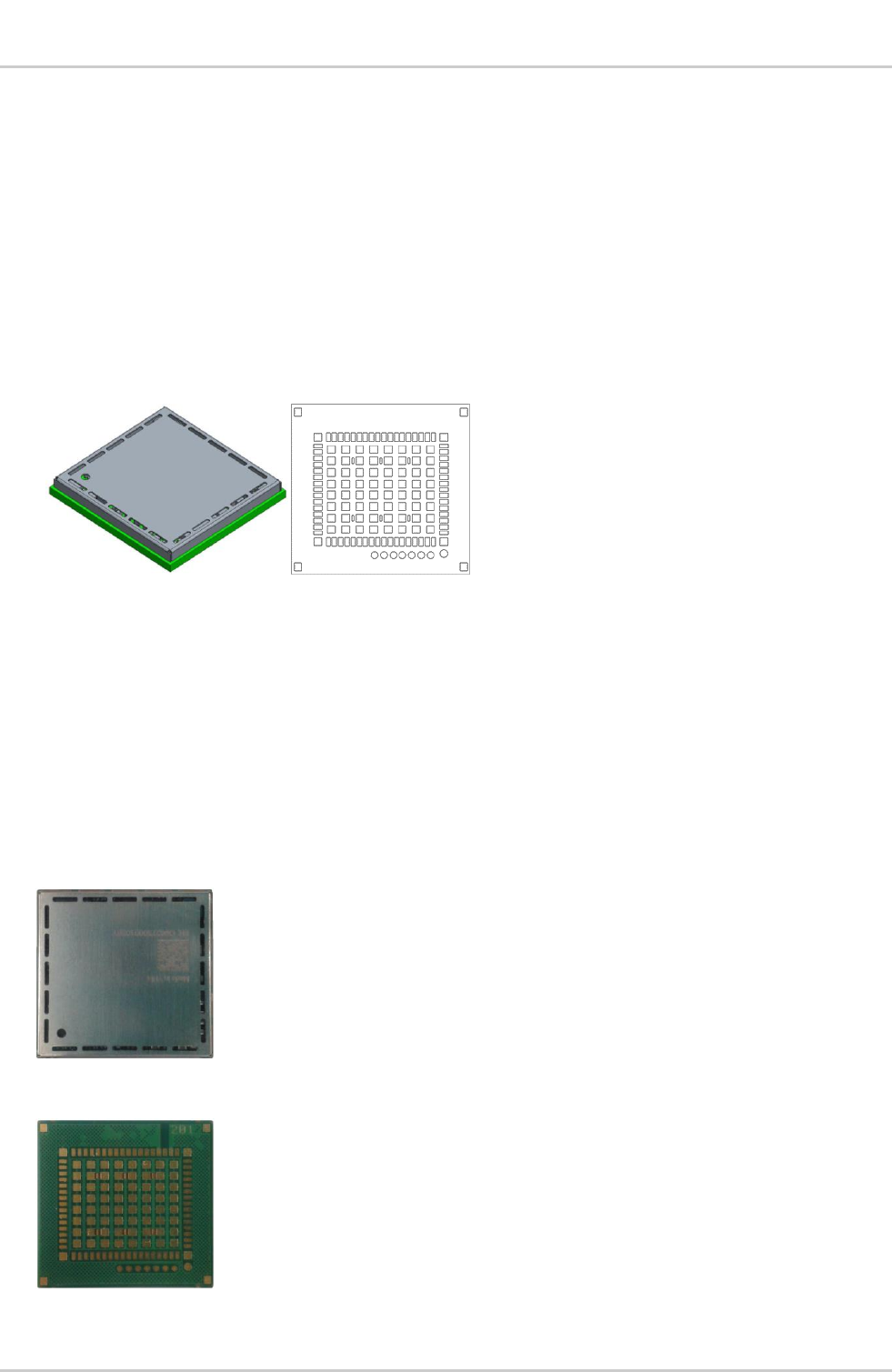
41110555 Rev 1.0 November 01, 2017 14
Product Technical Specification
Introduction
• 1x - JTAG Interface
• 1x - Wake up signal
• 1x - Fast shutdown signal
• 1x - PWM
• 1x - Main RF Antenna
1.6. Connection Interface
The AirPrime HL77xx modules are an LGA form factor device. All electrical and mechanical
connections are made through the 146 Land Grid Array (LGA) pads on the bottom side of the PCB.
Figure 2. Mechanical Overview (Top View and Bottom View)
The 146 pads have the following distribution:
• 66 inner signal pads, 1x0.5mm, pitch 0.8mm
• 1 reserved test point (do not connect), 1.0mm diameter
• 7 test point (JTAG), 0.8mm diameter, 1.20mm pitch
• 64 inner ground pads, 1.0x1.0mm, pitch 1.825mm/1.475mm
• 4 inner corner ground pads, 1x1mm
• 4 outer corner ground pads, 1x0.9mm
Figure 3. Actual Module (Top View)
Figure 4. Actual Module (Bottom View)
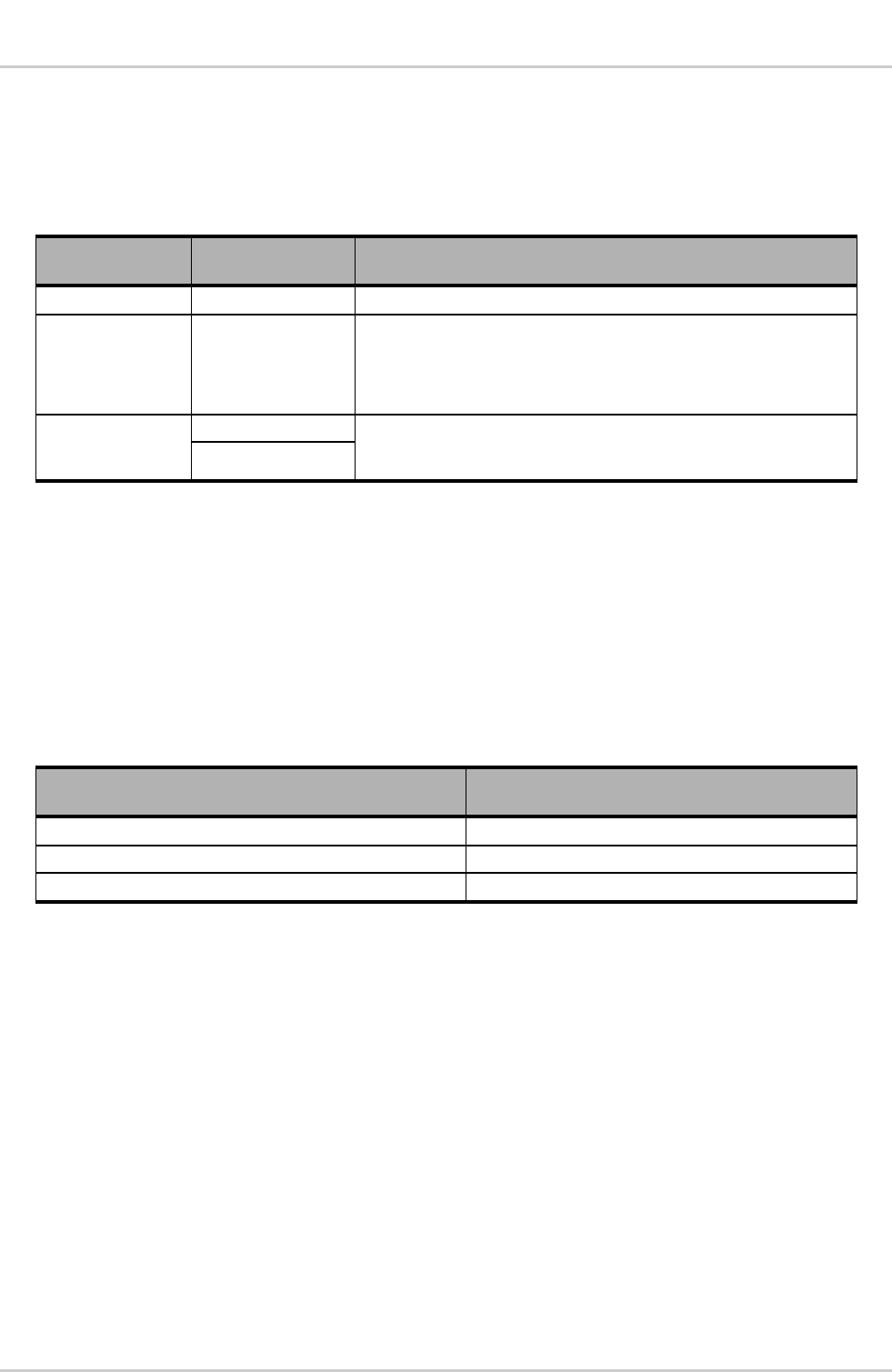
41110555 Rev 1.0 November 01, 2017 15
Product Technical Specification
Introduction
1.7. ESD
Refer to the following table for ESD Specifications.
Table 3. ESD Specifications
Category
Connection
Specification
Operational
RF ports
IEC-61000-4-2 — Level (Electrostatic Discharge Immunity Test)
Non-operational
Host connector
interface
Unless otherwise specified:
• JESD22-A114 ± 1kV Human Body Model (TBC)
• JESD22-A115 ± 200V Machine Model (TBC)
• JESD22-C101C ± 250V Charged Device Model (TBC)
Signals
SIM connector
Adding ESD protection is highly recommended at the point where
the USIM contacts are exposed, and for any other signals that
would be subjected to ESD by the user.
Other host signals
1.8. Environmental and Certifications
1.8.1. Environmental Specifications
The environmental specification for both operating and storage conditions are defined in the table
below.
Table 4. Environmental Specifications
Conditions
Range
Operating Class A
-30°C to +70°C
Operating Class B
-40°C to +85°C
Storage
-40°C to +85°C
Class A is defined as the operating temperature ranges that the device:
• Shall exhibit normal function during and after environmental exposure.
• Shall meet the minimum requirements of 3GPP or appropriate wireless standards.
Class B is defined as the operating temperature ranges that the device:
• Shall remain fully functional during and after environmental exposure
• Shall exhibit the ability to establish an SMS or DATA call (emergency call) at all times even
when one or more environmental constraint exceeds the specified tolerance.
• Unless otherwise stated, full performance should return to normal after the excessive
constraint(s) have been removed.

41110555 Rev 1.0 November 01, 2017 16
Product Technical Specification
Introduction
1.8.2. Regulatory
The AirPrime HL7718 and HL7748 modules will be compliant with FCC regulations, while the
AirPrime HL7749 module will be compliant with RCM regulations.
1.8.3. RoHS Directive Compliant
The AirPrime HL77xx modules are compliant with RoHS Directive 2011/65/EU which sets limits for
the use of certain restricted hazardous substances. This directive states that “from 1st July 2006, new
electrical and electronic equipment put on the market does not contain lead, mercury, cadmium,
hexavalent chromium, polybrominated biphenyls (PBB) or polybrominated diphenyl ethers (PBDE)”.
1.8.4. Disposing of the Product
This electronic product is subject to the EU Directive 2012/19/EU for Waste Electrical
and Electronic Equipment (WEEE). As such, this product must not be disposed of at a
municipal waste collection point. Please refer to local regulations for directions on how
to dispose of this product in an environmental friendly manner.
1.9. References
[1] AirPrime HL Series Customer Process Guidelines
Reference Number: 4114330
[2] AirPrime HL77xx AT Commands Interface Guide
Reference Number: 41110842
[3] AirPrime HL Series Development Kit User Guide
Reference Number: 4114877
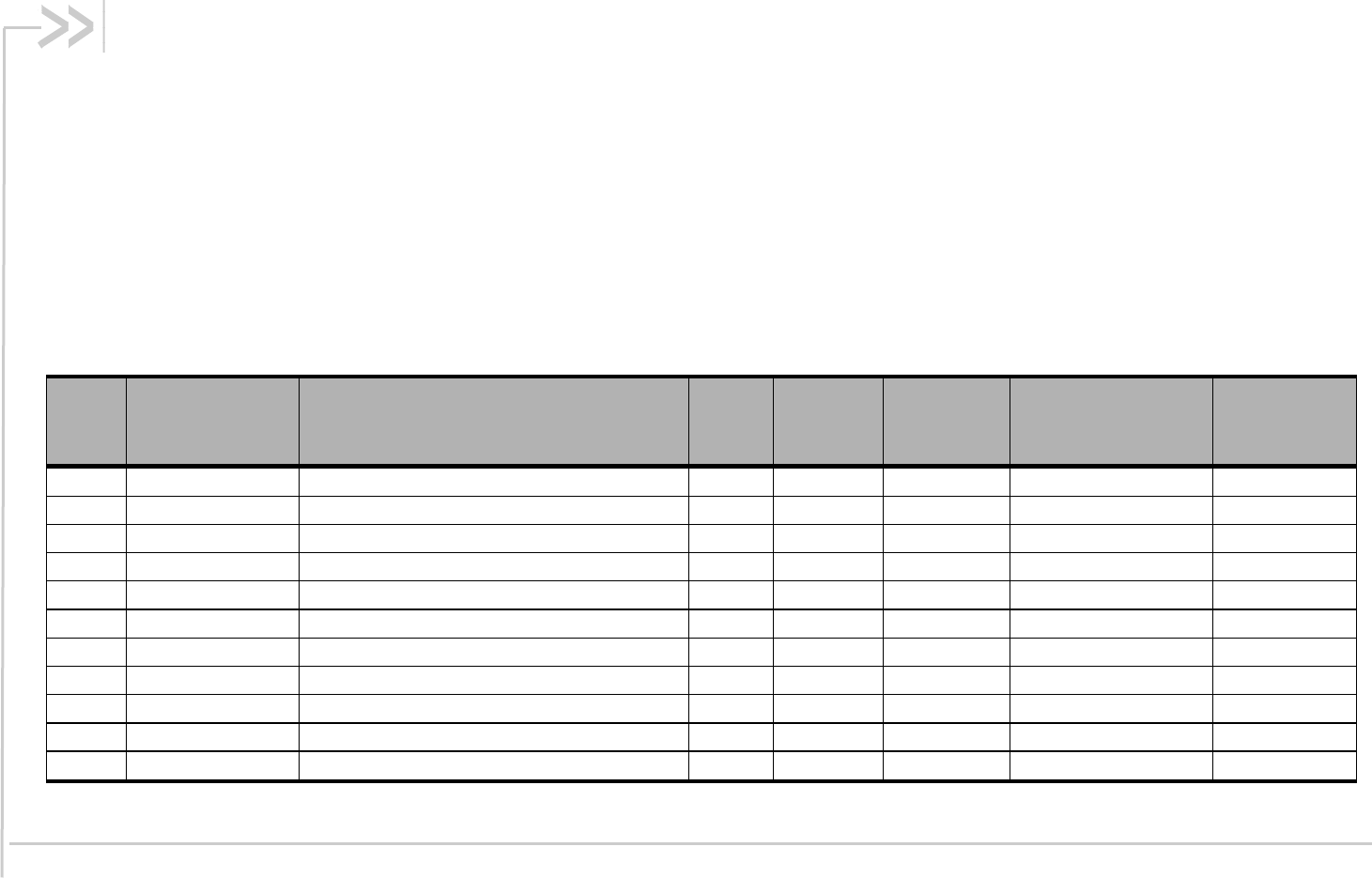
41110555 Rev 1.0 November 01, 2017 17
2. Pad Definition
AirPrime HL77xx pads are divided into 2 functional categories.
• Core functions and associated pads cover all the mandatory features for M2M connectivity and will be available by default across all CF3 family of
modules. These Core functions are always available and always at the same physical pad locations. A customer platform using only these functions
and associated pads are guaranteed to be forward and/or backward compatible with the next generation of CF3 modules.
• Extension functions and associated pads bring additional capabilities to the customer. Whenever an Extension function is available on a module, it
is always at the same pad location.
Other pads marked as “not connected” or “reserved” should not be used.
Table 5. Pin Definition
Pad #
Signal Name
Function
I/O
Active
Low/High
Power
Supply
Domain
Recommendation
for Unused Pads
Type
1
GPIO1
General purpose input/output
I/O
-
1.8V
Left Open
Extension
2
UART1_RI
UART1 Ring indicator
O
-
1.8V
Connect to test point
Core
3
UART1_RTS
UART1 Request to send
I
L
1.8V
Connect to test point
Core
4
UART1_CTS
UART1 Clear to send
O
L
1.8V
Connect to test point
Core
5
UART1_TX
UART1 Transmit data
I
-
1.8V
Connect to test point
Core
6
UART1_RX
UART1 Receive data
O
-
1.8V
Connect to test point
Core
7
UART1_DTR
UART1 Data terminal ready
I
L
1.8V
Connect to test point
Core
8
UART1_DCD
UART1 Data carrier detect
O
L
1.8V
Connect to test point
Core
9
UART1_DSR
UART1 Data set ready
O
L
1.8V
Connect to test point
Core
10
GPIO2
General purpose input/output
I/O
-
1.8V
Connect to test point
Core
11
RESET_IN_N
Input reset signal
I
L
1.8V
Left Open
Core
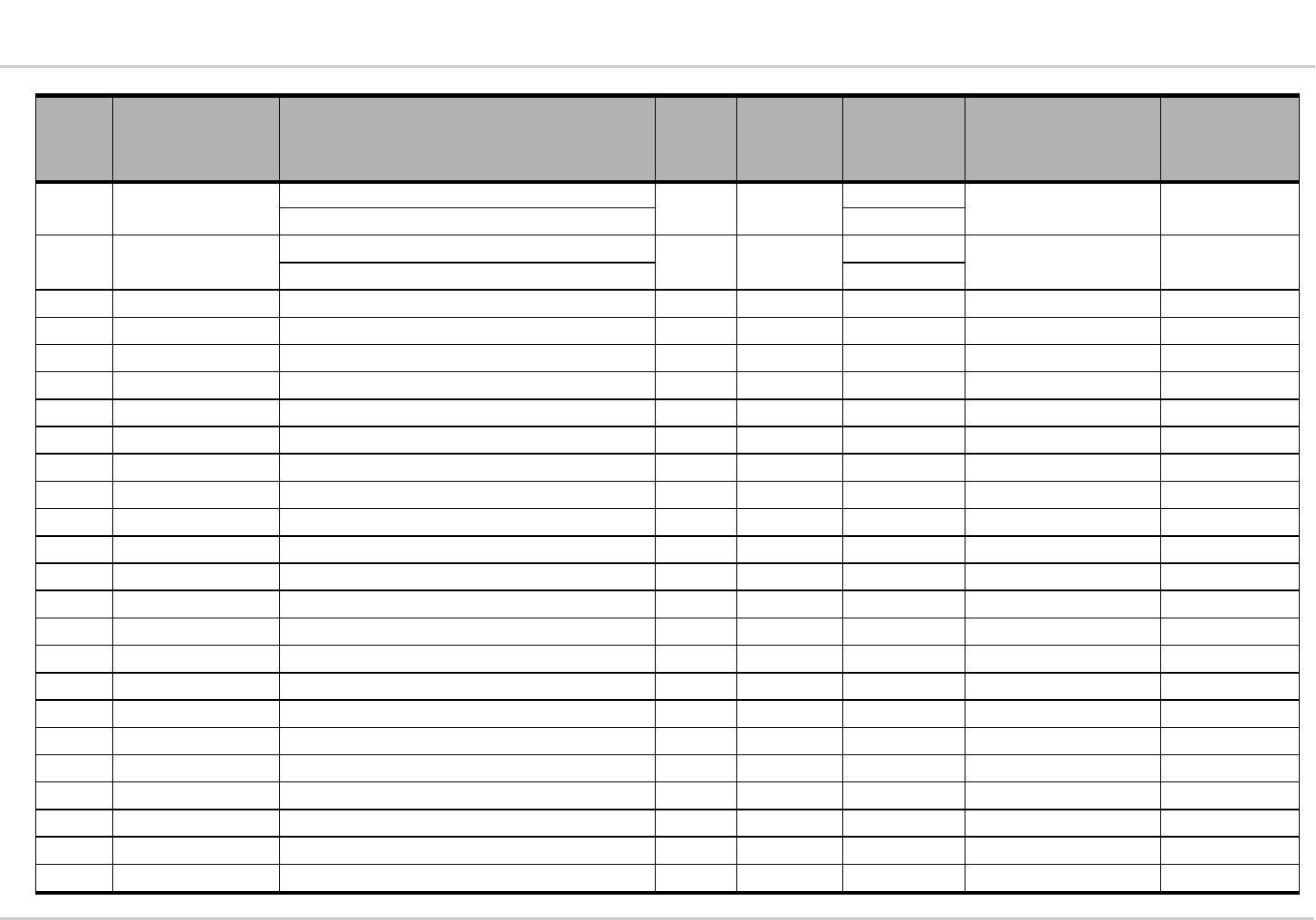
41110555 Rev 1.0 November 01, 2017 18
Product Technical Specification
Pad Definition
Pad #
Signal Name
Function
I/O
Active
Low/High
Power
Supply
Domain
Recommendation
for Unused Pads
Type
12
USB_D-
USB Data Negative (Low / Full Speed)
I/O
-
3.3V
Connect to test point
Extension
USB Data Negative (High Speed)
0.38V
13
USB_D+
USB Data Positive (Low / Full Speed)
I/O
-
3.3V
Connect to test point
Extension
USB Data Positive (High Speed)
0.38V
14
NC
Not Connected
Not connected
15
NC
Not Connected
Not connected
16
NC
Not Connected
Not connected
17
NC
Not Connected (Reserved for future use)
Not connected
18
NC
Not Connected (Reserved for future use)
Not connected
19
WAKE-UP
Wake Up
I
H
1.8V
Left Open
Extension
20
NC
Not Connected (Reserved for future use)
Not connected
21
NC
Not Connected
Not connected
22
GNSS_FREQ_OUT
26MHz System Clock Output
O
-
1.8V
Left Open
Extension
23
32K_CLKOUT
32.768kHz System Clock Output
O
-
1.8V
Left Open
Extension
24
ADC1
Analog to digital converter
I
-
1.2V
Left Open
Extension
25
ADC0
Analog to digital converter
I
-
1.2V
Left Open
Extension
26
UIM1_VCC
1.8V USIM1 Power supply
O
-
1.8V
Mandatory connection
Core
27
UIM1_CLK
1.8V USIM1 Clock
O
-
1.8V
Mandatory connection
Core
28
UIM1_DATA
1.8V USIM1 Data
I/O
-
1.8V
Mandatory connection
Core
29
UIM1_RESET
1.8V USIM1 Reset
O
L
1.8V
Mandatory connection
Core
30
GND
Ground
0V
0V
Mandatory connection
Extension
31
NC
Not Connected
Not connected
32
GND
Ground
0V
0V
Mandatory connection
Extension
33
PCM_OUT*
PCM data out
O
-
1.8V
Left Open
Extension
34
PCM_IN*
PCM data in
I
-
1.8V
Left Open
Extension
35
PCM_SYNC*
PCM sync out
I/O
-
1.8V
Left Open
Extension
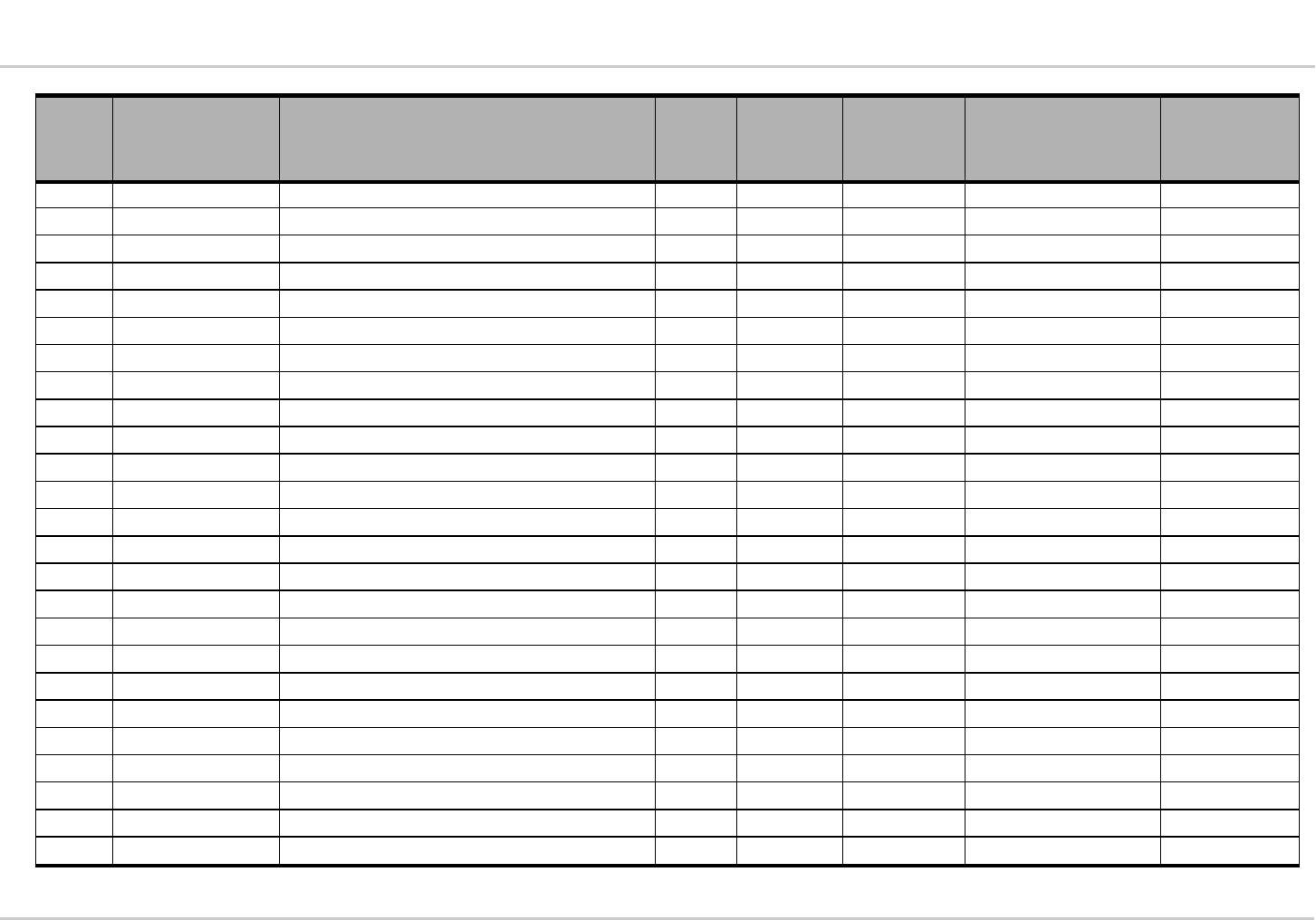
41110555 Rev 1.0 November 01, 2017 19
Product Technical Specification
Pad Definition
Pad #
Signal Name
Function
I/O
Active
Low/High
Power
Supply
Domain
Recommendation
for Unused Pads
Type
36
PCM_CLK*
PCM clock
I/O
-
1.8V
Left Open
Extension
37
GND
Ground
0V
0V
Mandatory connection
Core
38
NC
Not Connected (Reserved for future use)
Not connected
39
GND
Ground
0V
0V
Mandatory connection
Core
40
GPIO7
General purpose input/output
I/O
-
1.8V
Left Open
Core
41
GPIO8
General purpose input/output
I/O
-
1.8V
Connect to test point
Core
42
NC
Not Connected (Reserved for future use)
Not connected
43
NC
Not Connected (Reserved for future use)
Not connected
44
DEBUG_TX
Debug Transmit data
O
1.8V
Left Open
Extension
45
VGPIO
GPIO voltage output
O
1.8V
Left Open
Core
46
GPIO6
General purpose input/output
I/O
-
1.8V
Left Open
Core
47
NC
Not Connected (Reserved for future use)
Left Open
Not connected
48
GND
Ground
0V
0V
Mandatory connection
Core
49
RF_MAIN
RF Input/output
-
Mandatory connection
Core
50
GND
Ground
0V
0V
Mandatory connection
Core
51
DEBUG_RX
Debug Receive data
I
1.8V
Left Open
Extension
52
GPIO10
General purpose input/output
I/O
-
1.8V
Left Open
Extension
53
GPIO11
General purpose input/output
I/O
-
1.8V
Left Open
Extension
54
GPIO15
General purpose input/output
I/O
-
1.8V
Left Open
Extension
55
NC
Not Connected
Not connected
56
NC
Not Connected
Not connected
57
NC
Not Connected
Not connected
58
PWM0
Pulse Width Modulation
O
-
1.8V/3V
Left Open
Extension
59
PWR_ON_N
Active Low Power On control signal
I
L
1.8V
Mandatory connection
Core
60
NC
Not Connected
Not connected
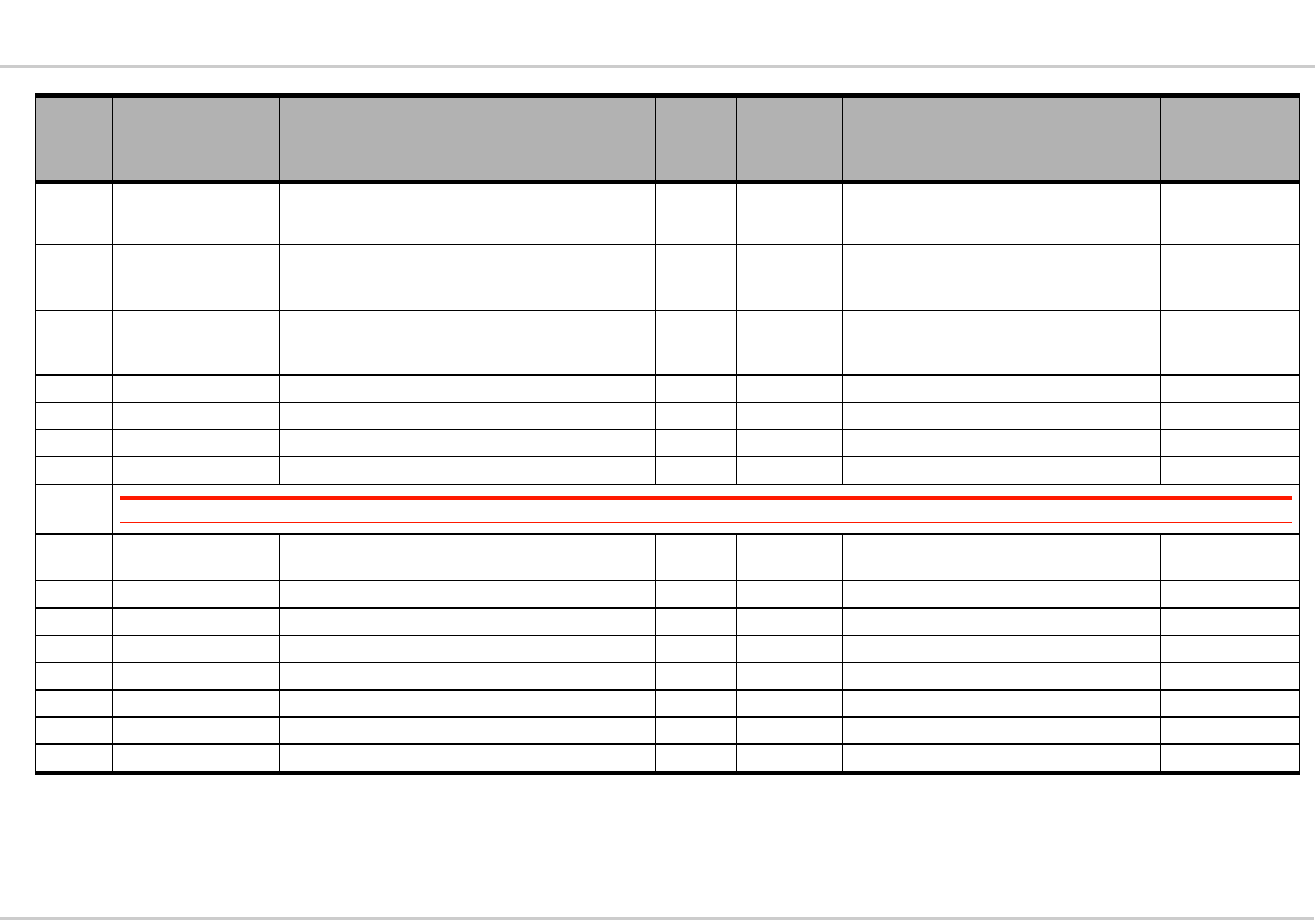
41110555 Rev 1.0 November 01, 2017 20
Product Technical Specification
Pad Definition
Pad #
Signal Name
Function
I/O
Active
Low/High
Power
Supply
Domain
Recommendation
for Unused Pads
Type
61
VBATT_PA
Power supply (refer to section 3.1 Power Supply
for more information)
I
-
3.2V (min)
3.7V (typ)
4.5V (max)
Mandatory connection
Core
62
VBATT_PA
Power supply (refer to section 3.1 Power Supply
for more information)
I
-
3.2V (min)
3.7V (typ)
4.5V (max)
Mandatory connection
Core
63
VBATT
Power supply
I
-
3.2V (min)
3.7V (typ)
4.5V (max)
Mandatory connection
Core
64
UIM1_DET / GPIO3
USIM1 Detection / General purpose input/output
I/O
H
1.8V
Left Open
Core
65
FAST_SHUTDOWN
Fast Shutdown
I
L
1.8V
Left Open
Extension
66
GPIO5
General purpose input/output
I/O
-
1.8V
Left Open
Extension
67-70
GND
Ground
GND
0V
Core
71 -
166
Note: These pads are not available on the AirPrime HL77xx modules.
167 -
234
GND
Ground
GND
0V
Core
236
JTAG_RESET
JTAG RESET
I
L
1.8V
Left Open
Extension
237
JTAG_TCK
JTAG Test Clock
I
-
1.8V
Left Open
Extension
238
JTAG_TDO
JTAG Test Data Output
O
-
1.8V
Left Open
Extension
239
JTAG_TMS
JTAG Test Mode Select
I
-
1.8V
Left Open
Extension
240
JTAG_TRST
JTAG Test Reset
I
L
1.8V
Left Open
Extension
241
JTAG_TDI
JTAG Test Data Input
I
-
1.8V
Left Open
Extension
242
NC
Not Connected
Not connected
* This pad is not supported on the AirPrime HL77xx.
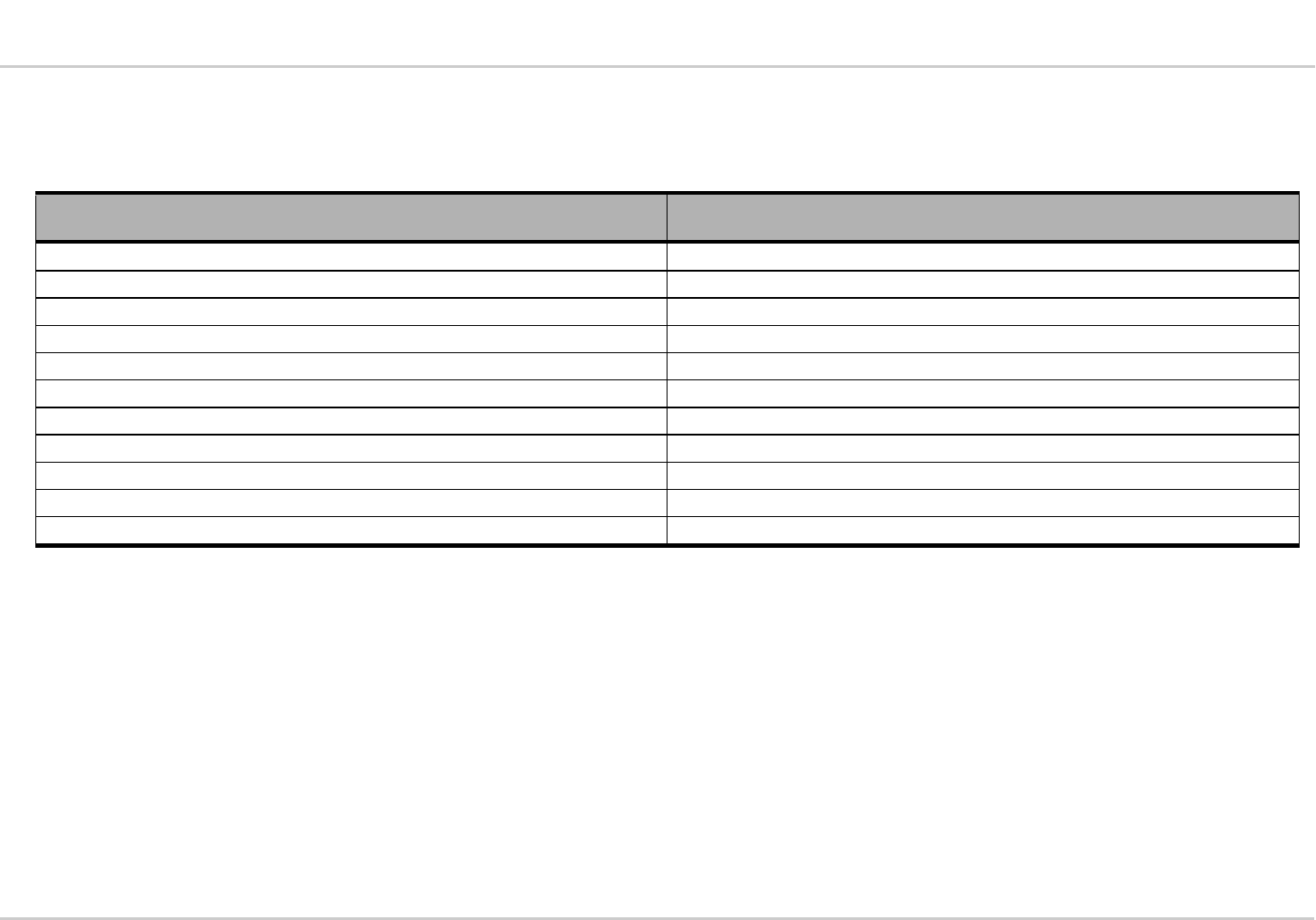
41110555 Rev 1.0 November 01, 2017 21
Product Technical Specification
Pad Definition
2.1. Pad Types
Table 6. Pad Type Codes
Type
Definition
I
Digital Input
O
Digital Output
I/O
Digital Input / Output
L
Active High
H
Active Low
T
Tristate
T/PU
Tristate with pull-up enabled
T/PD
Tristate with pull-down enabled
PU
Pull-up enabled
PD
Pull-down enabled
N/A
Not Applicable
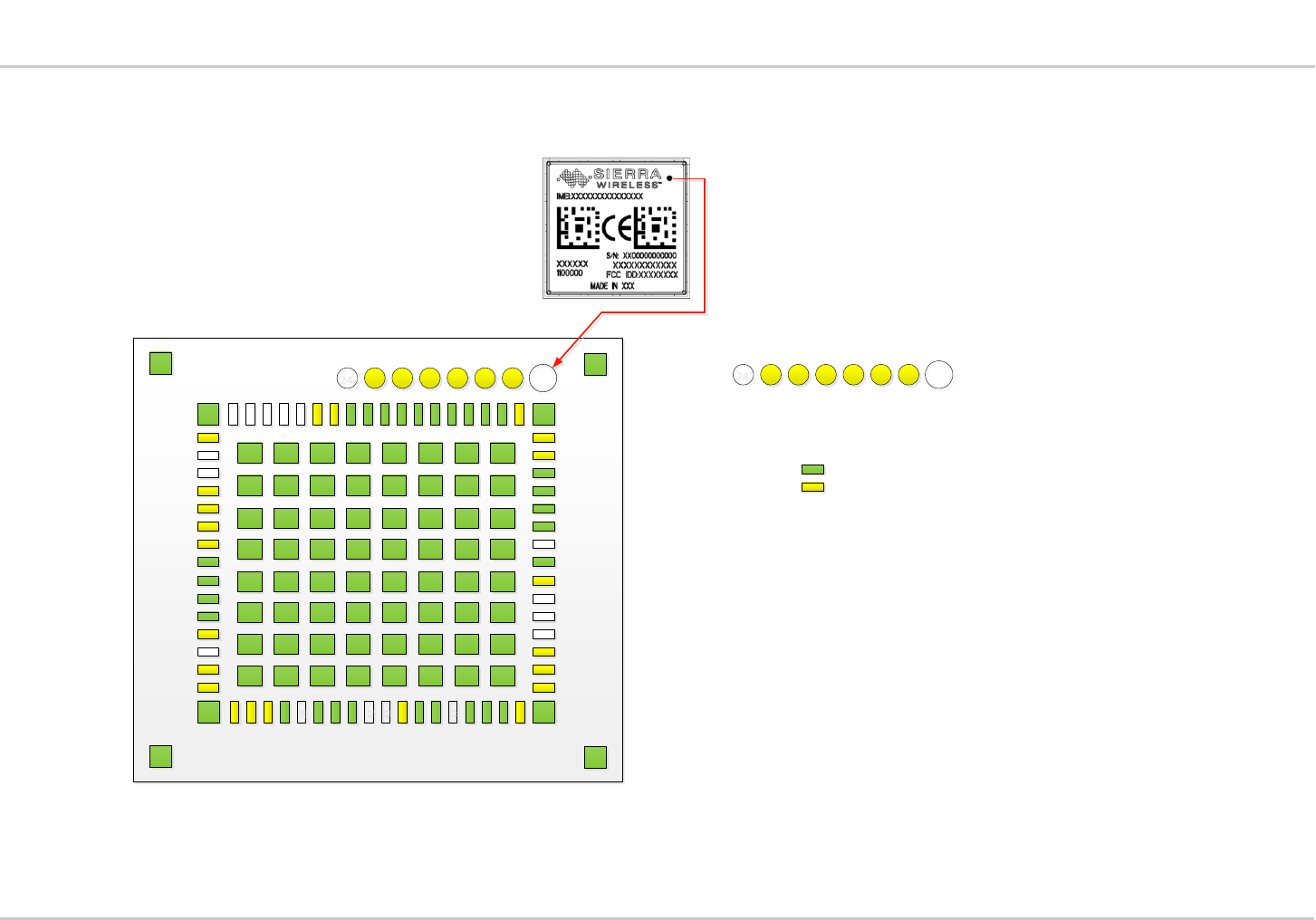
41110555 Rev 1.0 November 01, 2017 22
Product Technical Specification
Pad Definition
2.2. Pad Configuration (Top View, Through Module)
168
169
167
170
18
17
16
15
14
13
12
11
10
9
8
7
6
4
3
2
1
5
66
65
64
63
62
61
60
59
34
35
36
37
38
39
40
41
42
43
44
45
46
48
49
50
51
47
58
57
56
55
53
52
54
70
67
19
20
21
22
23
24
25
26
27
28
29
30
32
33
31
69
68
192 193 194 195 196 197 198 171
191 214 215 216 217 218 199 172
190 213 228 229 230 219 200 173
189 212 227 234 231 220 201 174
188 211 226 233 232 221 202 175
187 210 225 224 223 222 203 176
186 209 208 207 206 205 204 177
185 184 183 182 181 180 179 178
236237238239240241242
GND
GPIO5
FAST_SHUTDOWN
UIM1_DET / GPIO3
VBATT
VBATT_PA
VBATT_PA
NC
PWR_ON_N
PWM0
NC
NC
NC
GPIO15
GPIO11
GPIO10
GND
GND
WAKE-UP
NC
NC
GNSS_FREQ_OUT
32K_CLKOUT
ADC1
ADC0
UIM1_VCC
UIM1_CLK
UIM1_DATA
UIM1_RESET
GND
NC
GND
PCM_OUT
GND
PCM_IN
PCM_SYNC
PCM_CLK
GND
NC
GND
GPIO7
GPIO8
NC
NC
DEBUG_TX
VGPIO
GPIO6
NC
GND
RF_MAIN
GND
DEBUG_RX
NC
NC
NC
NC
NC
USB_D+
USB_D-
RESET_IN_N
GPIO2
UART1_DSR
UART1_DCD
UART1_DTR
UART1_RX
UART1_TX
UART1_CTS
UART1_RTS
UART1_RI
GPIO1
NC
JTAG_TDI
JTAG_TRST
JTAG_TMS
JTAG_TDO
JTAG_TCK
JTAG_RESET
Core pin
Extension pin
236237238239240241242
Figure 5. Pad Configuration
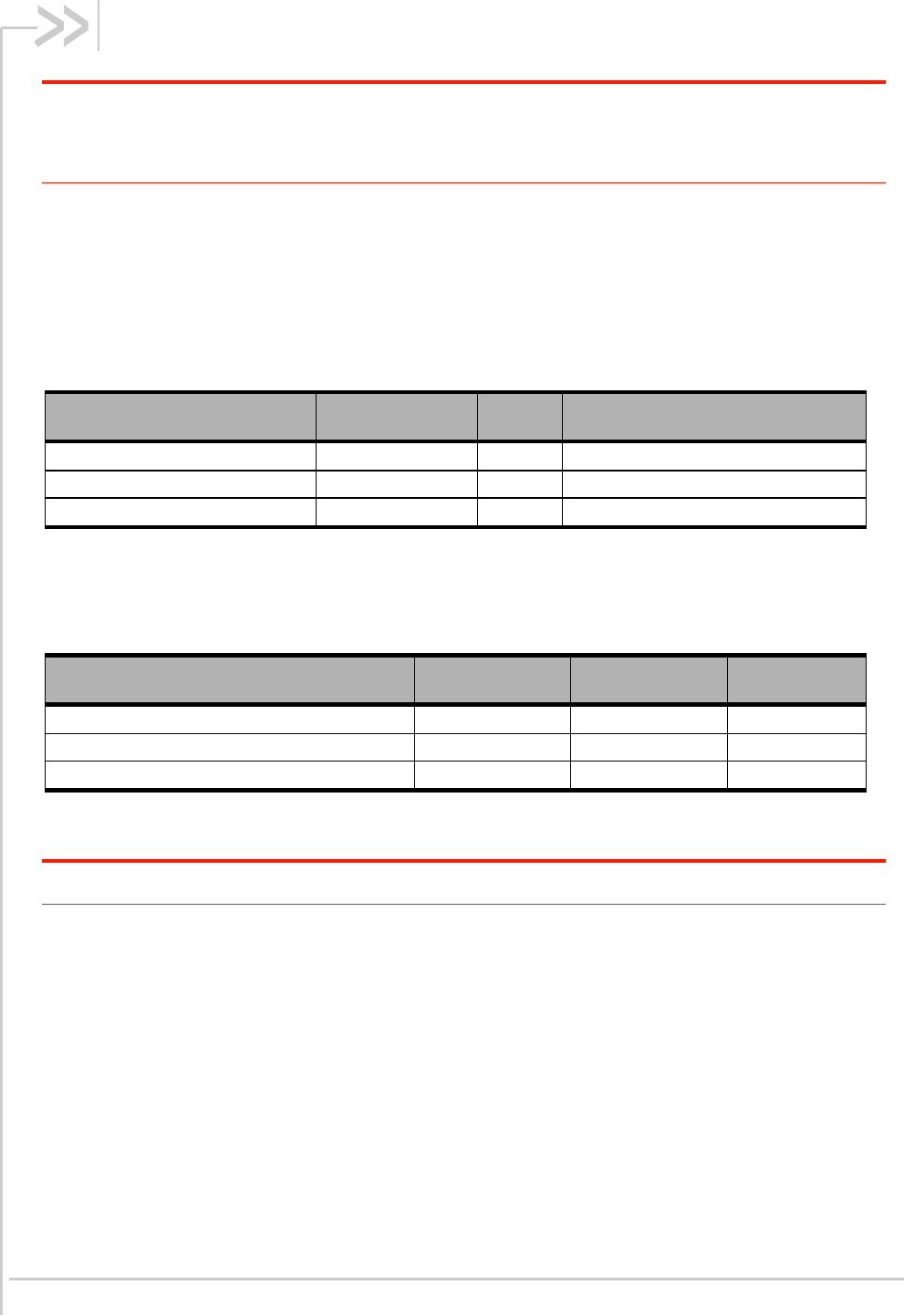
41110555 Rev 1.0 November 01, 2017 23
3. Detailed Interface Specifications
Note: If not specified, all electrical values are given for VBATT=3.7V and an operating temperature of 25°C.
For standard applications, VBATT and VBATT_PA must be tied externally to the same power supply.
For some specific applications, AirPrime HL77xx modules support separate VBATT and VBATT_PA
connections if requirements below are fulfilled.
3.1. Power Supply
The AirPrime HL77xx modules are supplied through the VBATT and VBATT_PA signals.
Refer to the following table for the pad description of the Power Supply interface.
Table 7. Power Supply Pad Description
Pad Number
Signal Name
I/O
Description
63
VBATT
I
Power supply (base band)
61, 62
VBATT_PA
I
Power supply (radio frequency)
37, 39, 48, 67-70, 167-234
GND
Ground
Refer to the following table for the electrical characteristics of the Power Supply interface.
Table 8. Power Supply Electrical Characteristics
Supply
Minimum
Typical
Maximum
VBATT voltage (V)
3.21
3.7
4.5
VBATT_PA voltage (V) Full Specification
3.21
3.7
4.5
VBATT_PA voltage (V) Extended Range
2.82 (TBC)
3.7
4.5
1 This value must be guaranteed during the burst
2 No guarantee of 3GPP performances over extended range
Note: Load capacitance for VBATT is around 37µF ± 20% (TBC) embedded inside the module.
Load capacitance for VBATT_PA is around 11µF ± 20% (TBC) embedded inside the module.
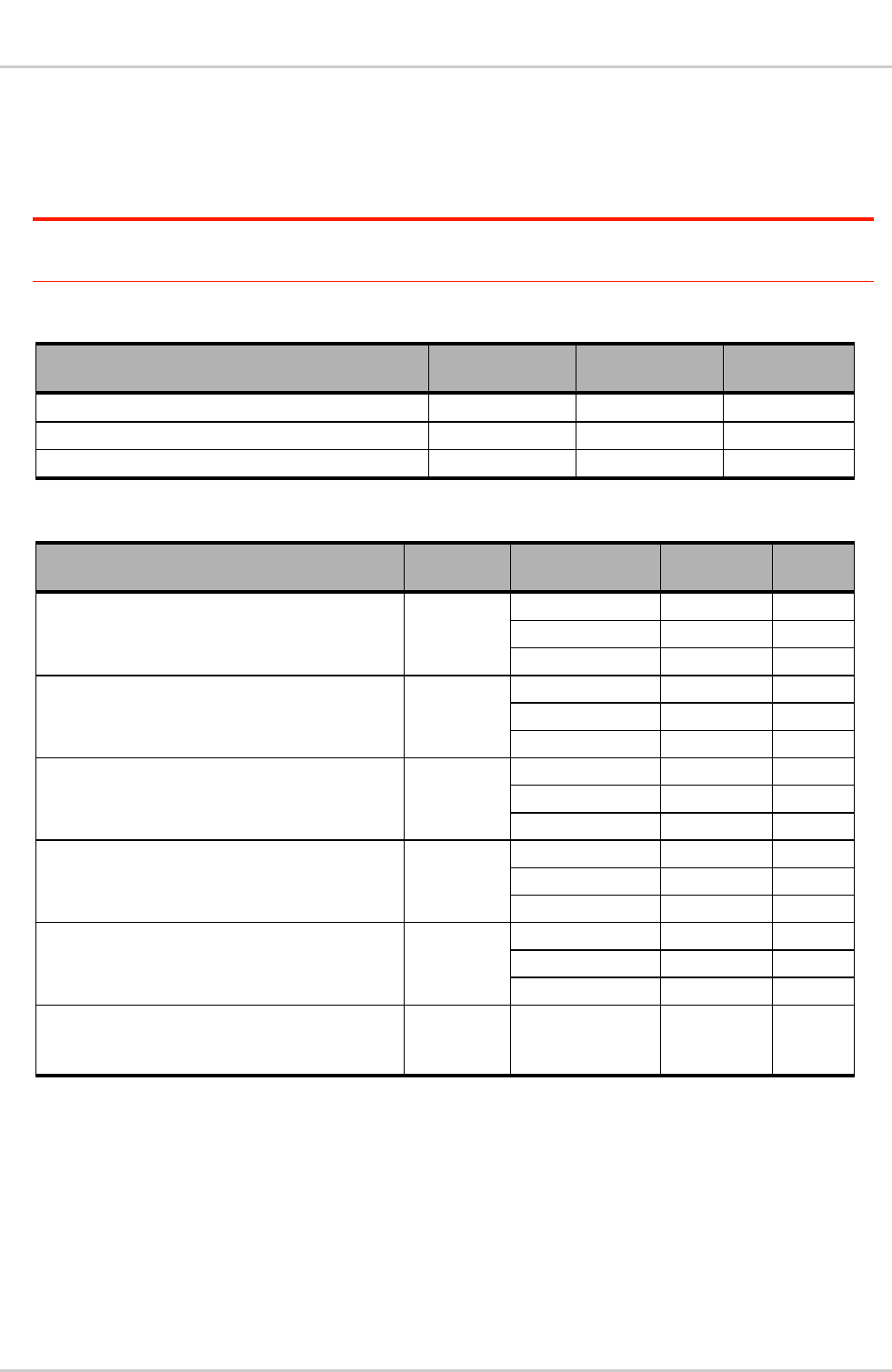
41110555 Rev 1.0 November 01, 2017 24
Product Technical Specification
Detailed Interface Specifications
3.2. Current Consumption
The following table lists the current consumption of the AirPrime HL77xx modules at different
conditions.
Note: Typical values are defined for VBATT/VBATT_PA at 3.7V and 25°C, for 50Ω impedance at all RF
ports with VSWR1:1 and CMW500. Maximum values are defined with worst conditions among
supported ranges of voltages and temperature (50Ω, VSWR1:1 and CMW500).
Table 9. Low Current Consumption Mode
Parameter
Typical
Maximum
Unit
Off mode
15
TBD
µA
Sleep mode (deregistered from the network)
1.3
TBD
mA
PSM mode
100 (TBC)
TBD
µA
Table 10. Current Consumption
Parameter
Band
Frequency
Typical
Unit
LTE in communication mode (TX Max)
Pout=23dBm BW=10Mhz RMC
mode 4RB_DL & 6RB_UL
B3
1810 MHz
290
mA
1843 MHz
285
mA
1875 MHz
285
mA
LTE in communication mode (TX Max)
Pout=23dBm BW=10Mhz RMC
mode 4RB_DL & 6RB_UL
B28
763 MHz
275
mA
781 MHz
268
mA
798 MHz
260
mA
LTE in communication mode (TX Max)
Pout=23dBm BW=10Mhz RMC
mode 4RB_DL & 6RB_UL
B12
734 MHz
265
mA
738 MHz
260
mA
741 MHz
260
mA
LTE in communication mode (TX Max)
Pout=23dBm BW=10Mhz RMC
mode 4RB_DL & 6RB_UL
B2
1935 MHz
290
mA
1960 MHz
292
mA
1985 MHz
303
mA
LTE in communication mode (TX Max)
Pout=23dBm BW=10Mhz RMC
mode 4RB_DL & 6RB_UL
B4
2115 MHz
280
mA
2133 MHz
284
mA
2150 MHz
280
mA
LTE in communication mode (TX Max)
Pout=23dBm BW=10Mhz RMC
mode 4RB_DL & 6RB_UL
B13
751 MHz
250
mA
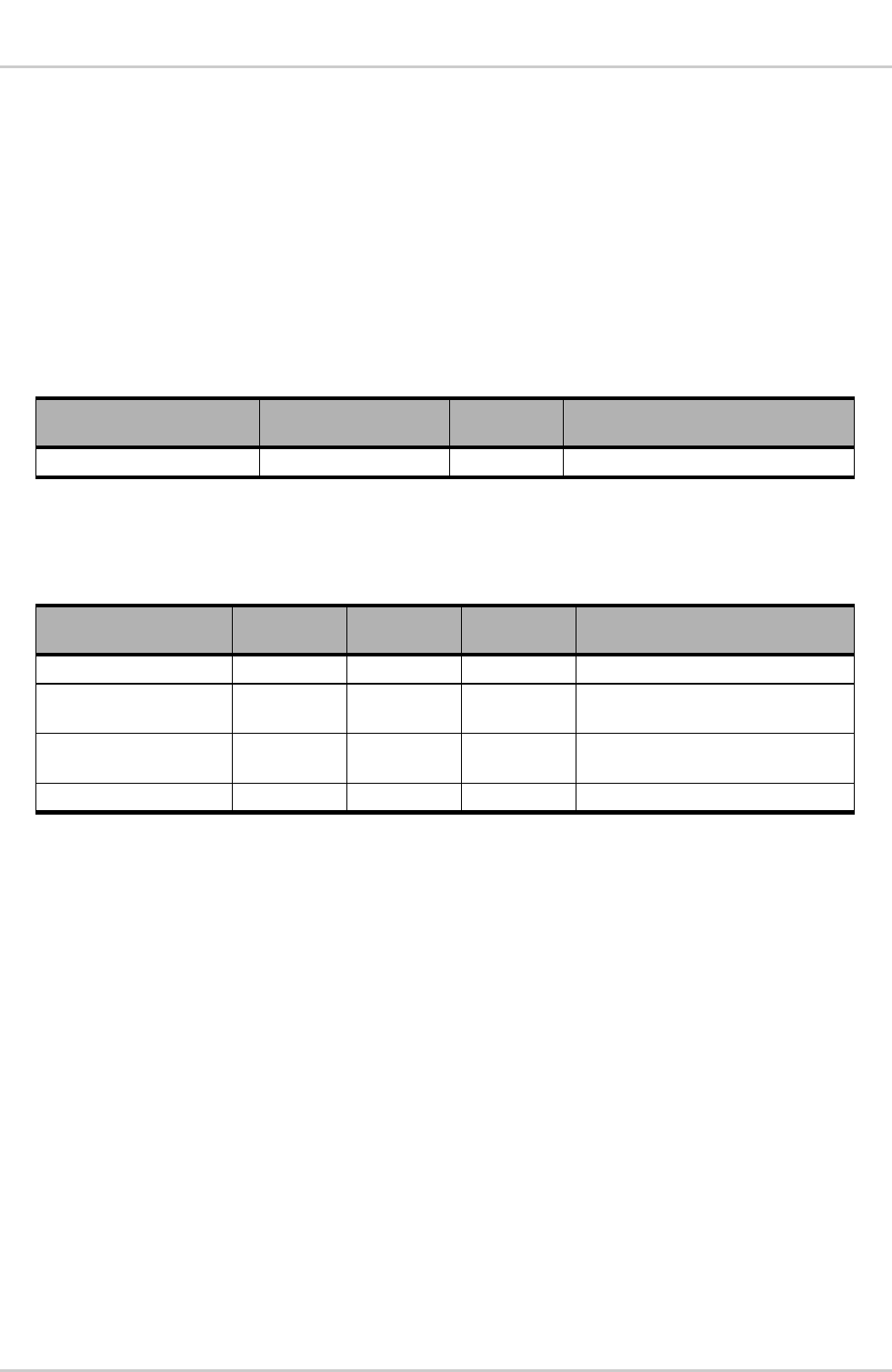
41110555 Rev 1.0 November 01, 2017 25
Product Technical Specification
Detailed Interface Specifications
3.3. VGPIO
The VGPIO output can be used to:
• Pull-up signals such as I/Os
• Supply the digital transistors driving LEDs
The VGPIO output is available when the AirPrime HL77xx module is switched ON.
Refer to the following table for the pad description of the VGPIO interface.
Table 11. VGPIO Pad Description
Pad Number
Signal Name
I/O
Description
45
VGPIO
O
GPIO voltage output
Refer to the following table for the electrical characteristics of the VGPIO interface.
Table 12. VGPIO Electrical Characteristics
Parameter
Minimum
Typical
Maximum
Remarks
Voltage level (V)
1.7
1.8
1.9
Both active mode and sleep mode
Current capability
Active Mode (mA)
-
-
TBD
Power management support up to
(TBD) mA output in Active mode
Current capability
Sleep Mode (mA)
-
-
TBD
Power management support up to
(TBD) mA output in Sleep mode
Rise Time (ms)
-
-
TBD
Start-Up time from 0V
3.4. USIM Interface
The AirPrime HL77xx modules have one physical USIM interface, USIM1, and an optional internal
USIM or eUICC.
The USIM1 interface allows control of a 1.8V USIM and is fully compliant with GSM 11.11
recommendations concerning USIM functions.
The five signals used by the UIM1 are as follows:
• UIM1_VCC: Power supply
• UIM1_CLK: Clock
• UIM1_DATA: I/O port
• UIM1_RESET: Reset
• UIM1_DET/GPIO3: Hardware SIM detection
Refer to the following table for the pad description of the USIM1 interface.
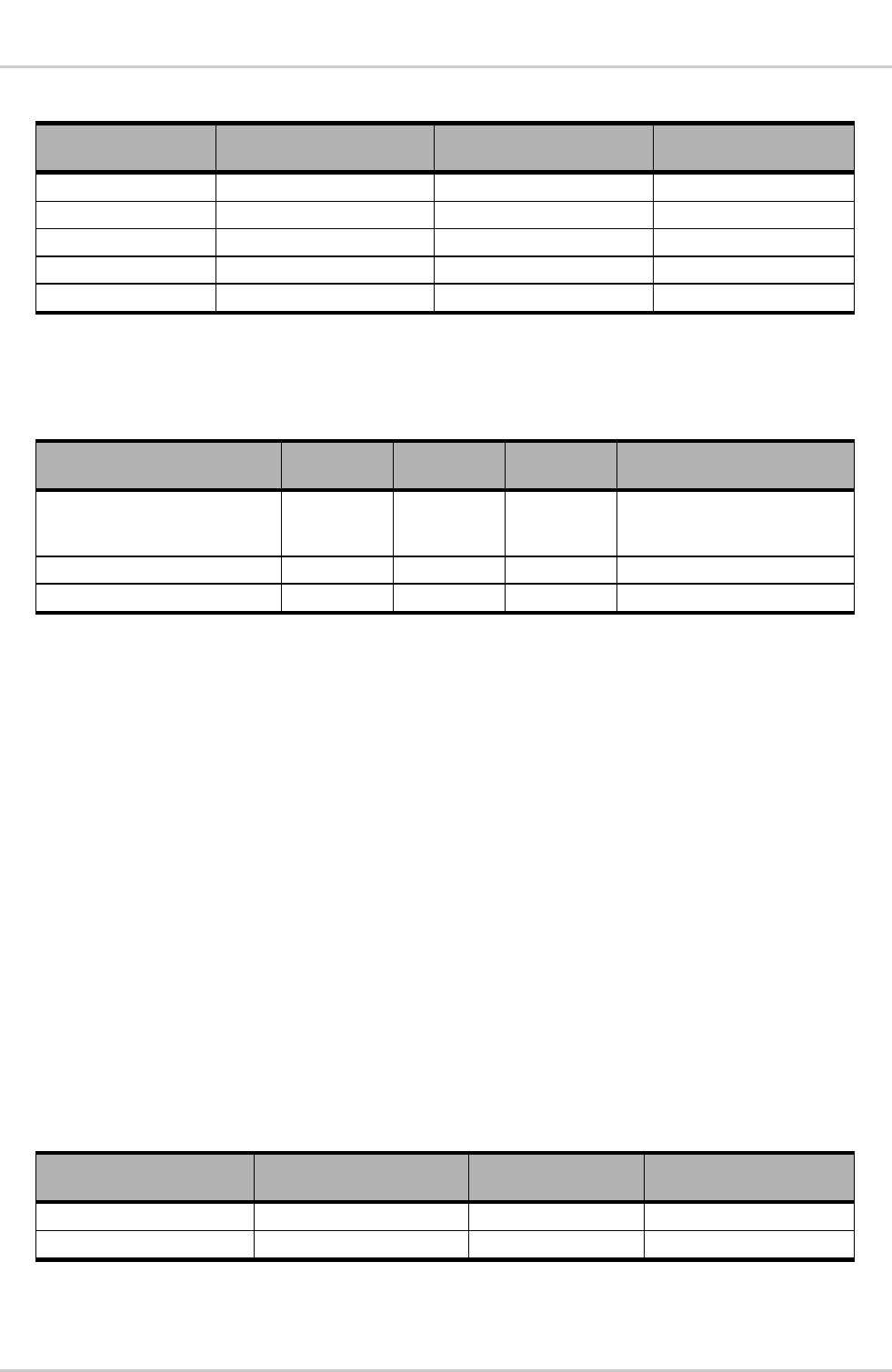
41110555 Rev 1.0 November 01, 2017 26
Product Technical Specification
Detailed Interface Specifications
Table 13. USIM1 Pad Description
Pad Number
Signal Name
Description
Multiplex
26
UIM1_VCC
1.8V USIM1 Power supply
27
UIM1_CLK
1.8V USIM1 Clock
28
UIM1_DATA
1.8V USIM1 Data
29
UIM1_RESET
1.8V USIM1 Reset
64
UIM1_DET / GPIO3
1.8V USIM1 Detection
GPIO3
Refer to the following table for the electrical characteristics of the USIM1 interface.
Table 14. USIM1 Electrical Characteristics
Parameter
Minimum
Typical
Maximum
Remarks
UIM1 Interface Voltage (V)
(VCC, CLK, IO, RESET)
-
1.80
-
The appropriate output
voltage is auto detected and
selected by software.
UIM1 Detect
-
1.80
-
High active
UIM1_VCC Current (mA)
-
-
10 (TBC)
Refer to section 5.6 USIM1 Application for a USIM application example.
3.4.1. UIM1_DET
UIM1_DET is used to detect and notify the application about the insertion and removal of a USIM
device in the USIM socket connected to the main USIM interface (UIM1). When a USIM is inserted, the
state of UIM1_DET transitions from logic 0 to logic 1. Inversely, when a USIM is removed, the state of
UIM1_DET transitions from logic 1 to logic 0.
Enabling or disabling this USIM detect feature can be done using an AT command. Refer to document
[2] AirPrime HL77xx AT Commands Interface Guide for more information.
3.5. USB Interface
The AirPrime HL77xx modules have one Universal Serial Bus interface compliant with USB Rev 2.0
(self-powered).
Refer to the following table for the pad description of the USB interface.
Table 15. USB Pad Description
Pad Number
Signal Name
I/O
Function
12
USB_D-
I/O
USB Data Negative
13
USB_D+
I/O
USB Data Positive
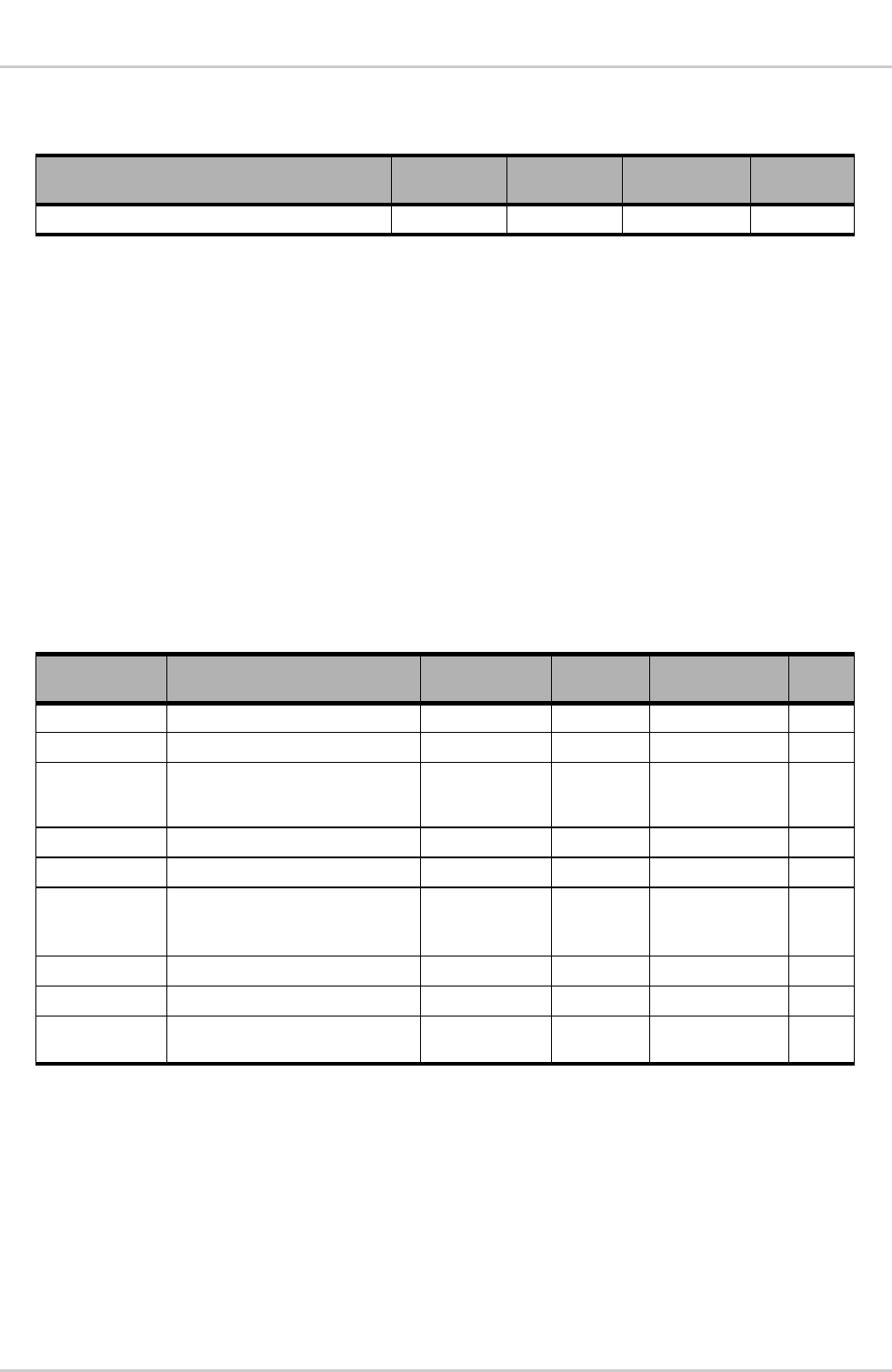
41110555 Rev 1.0 November 01, 2017 27
Product Technical Specification
Detailed Interface Specifications
Refer to the following table for the electrical characteristics of the USB interface.
Table 16. USB Electrical Characteristics
Parameter
Minimum
Typical
Maximum
Units
Input voltage at pins USB_D+ / USB_D-
3.15
3.3
3.45
V
3.6. Electrical Information for Digital I/O
The table below enumerates the electrical characteristics of the following digital interfaces:
• UART
• PCM
• JTAG
• GPIOs
• RESET
• PWM
• WAKE_UP
Table 17. Digital I/O Electrical Characteristics
Parameter
Description
Minimum
Typical
Maximum
Units
VIH
Logic High Input Voltage
0.85 x VDDIO*
VDDIO* + 0.3
V
VIL
Logic Low Input Voltage
-0.3
0.25 x VDDIO*
V
IIH / IIL
Input Leakage Current (either
Low or High, and No Pull
enabled)
0.03
µA
VOH
Logic High Output Voltage
VDDIO* – 0.45
VDDIO*
V
VOL
Logic Low Output Voltage
0
0.8
V
IOH / IOL
Output Leakage Current
(either Low or High) – assume
no external load
0.03
µA
RPU
Internal Pull Down Resistor
53
89
164
KΩ
RPD
Internal Pull Up Resistor
54
96
189
KΩ
Input
Capacitance
Input Pin Capacitance
7
pF
* VDDIO = VGPIO = 1.8V.
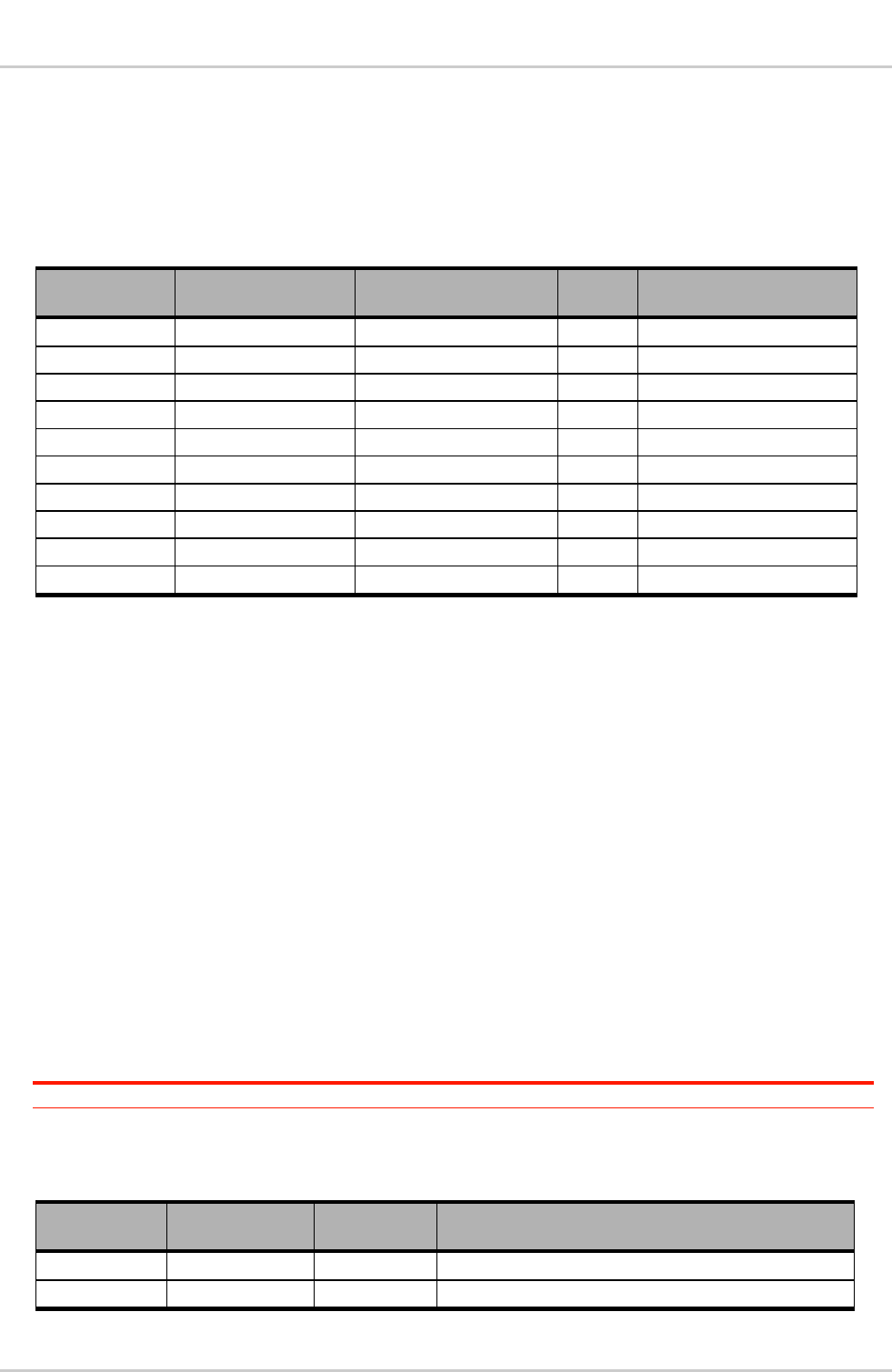
41110555 Rev 1.0 November 01, 2017 28
Product Technical Specification
Detailed Interface Specifications
3.7. General Purpose Input/Output (GPIO)
The AirPrime HL77xx modules provide 10 GPIOs, 1 of which has a multiplex.
The following table describes the pin description of the GPIO interface.
Table 18. GPIO Pad Description
Pad Number
Signal Name
Multiplex
I/O
Power Supply Domain
1
GPIO1
I/O
1.8V
10
GPIO2
I/O
1.8V
40
GPIO7
I/O
1.8V
41
GPIO8
I/O
1.8V
46
GPIO6
I/O
1.8V
52
GPIO10
I/O
1.8V
53
GPIO11
I/O
1.8V
54
GPIO15
I/O
1.8V
64
GPIO3
UIM1_DET
I/O
1.8V
66
GPIO5
I/O
1.8V
3.8. Main Serial Link (UART1)
The main serial link (UART1) is used for communication between the AirPrime HL77xx modules and a
PC or host processor. It consists of a flexible 8-wire serial interface that complies with RS-232 interface.
The main serial link (UART1) is an asynchronous serial interface.
The signals used by UART1 are as follows:
• TX data (UART1_TX)
• RX data (UART1_RX)
• Request To Send (UART1_RTS)
• Clear To Send (UART1_CTS)
• Data Terminal Ready (UART1_DTR)
• Data Set Ready (UART1_DSR)
• Data Carrier Detect (UART1_DCD)
• Ring Indicator (UART1_RI)
Note: Signal names are according to PC view.
Refer to the following table for the pad description of the main serial link (UART1) interface.
Table 19. UART1 Pad Description
Pad Number
Signal Name*
I/O*
Description
2
UART1_RI
O
Signal incoming calls (data only), SMS, etc.
3
UART1_RTS
I
Request to send
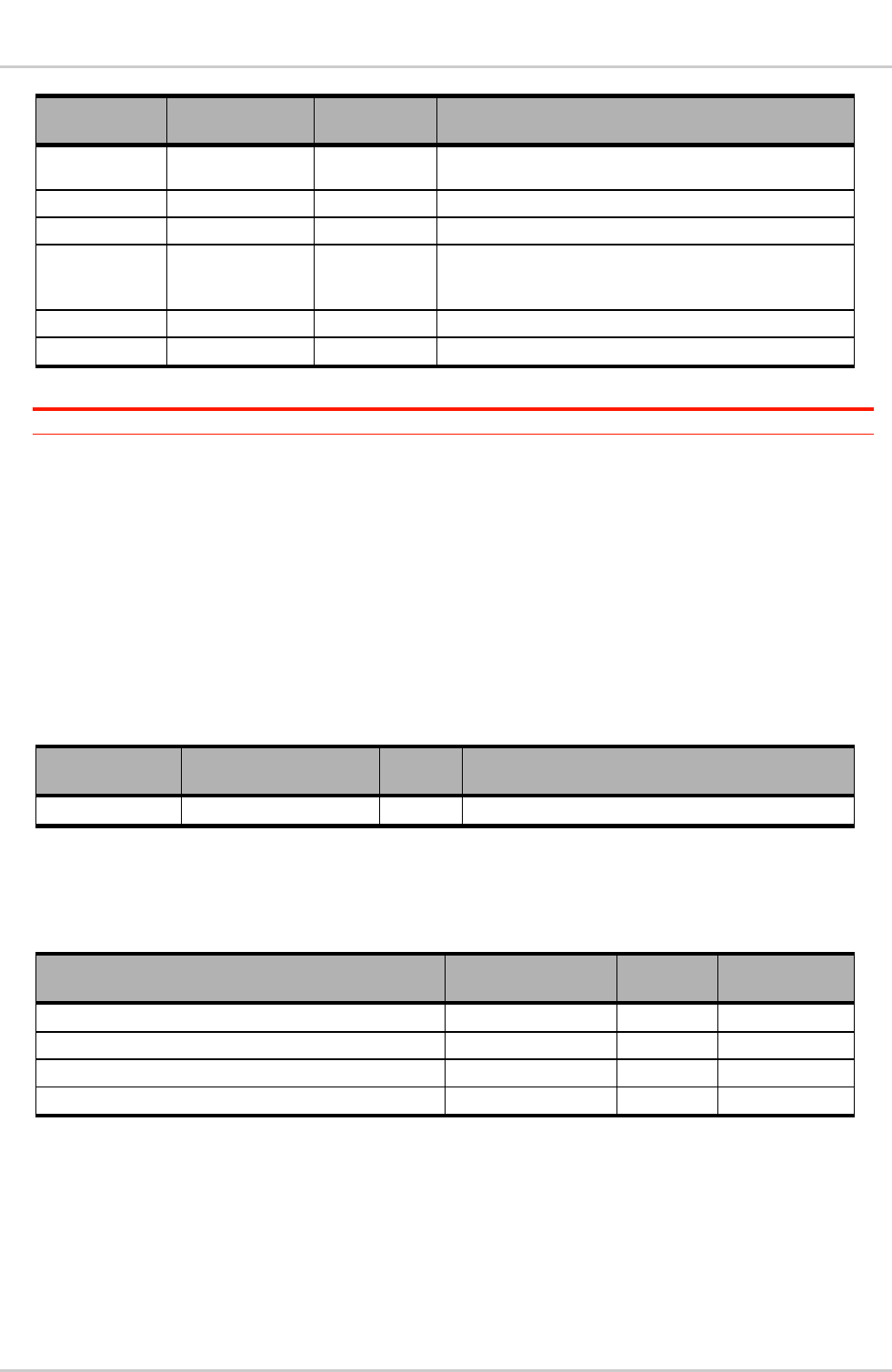
41110555 Rev 1.0 November 01, 2017 29
Product Technical Specification
Detailed Interface Specifications
Pad Number
Signal Name*
I/O*
Description
4
UART1_CTS
O
The AirPrime HL77xx is ready to receive AT
commands
5
UART1_TX
I
Transmit data
6
UART1_RX
O
Receive data
7
UART1_DTR
I (active low)
Prevents the AirPrime HL77xx from entering sleep
mode, switches between data mode and command
mode, and wakes the module up.
8
UART1_DCD
O
Signal data connection in progress
9
UART1_DSR
O
Signal UART interface is ON
* According to PC view.
Note: UART1_CTS must be left floating or set to level “0” before starting the HL77xx module.
3.9. Power On Signal (PWR_ON_N)
The PWR_ON_N signal is internally connected to the permanent 1.8V supply regulator inside the
AirPrime HL77xx module via a pull-up resistor. Once VBATT is supplied to the module, this 1.8V
supply regulator will be enabled and so the PWR_ON_N signal is by default at high level.
A low-level signal on PWR_ON_N must be provided to switch the AirPrime HL77xx module ON, and the
signal must be kept at low level to keep the module ON.
Refer to the following table for the pad description of the PWR_ON_N interface.
Table 20. PWR_ON_N Pad Description
Pad Number
Signal Name
I/O
Description
59
PWR_ON_N
I
Power the AirPrime HL77xx On
Refer to the following table for the electrical characteristics of the PWR_ON_N interface.
Table 21. PWR_ON_N Electrical Characteristics
Parameter
Minimum
Typical
Maximum
Input Voltage-Low (V)
-
0.51 (TBC)
Input Voltage-High (V)
1.33 (TBC)
-
2.2 (TBC)
Power-up period (ms) from PWR_ON_N falling edge
Always set to GND
-
-
PWR_ON_N assertion time (ms)
25 (TBC)
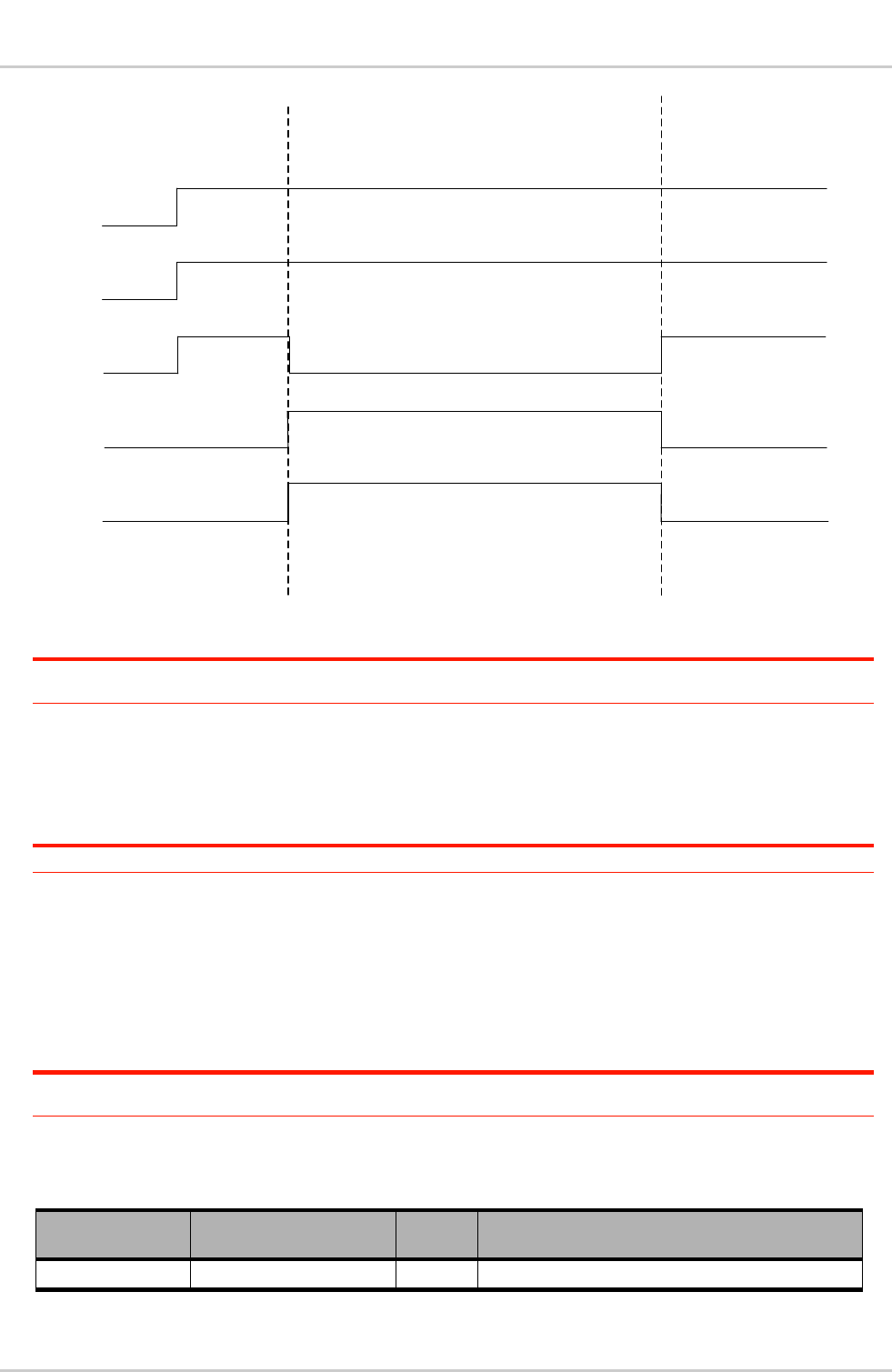
41110555 Rev 1.0 November 01, 2017 30
Product Technical Specification
Detailed Interface Specifications
VBATT
VGPIO ( pin 45 )
PWR_ON_N
Power OFF Power ON Power OFF
Base Band
PMU supply
Module is OFF Module is OFF Module is ON
RESET
Figure 6. PWR_ON_N and PWR_OFF Sequence
Note: As PWR_ON_N is internally pulled up with 1MΩ, an open collector or open drain transistor must be
used for ignition.
VGPIO is an output from the module that can be used to check if the module is active.
• When VGPIO = 0V, the module is OFF
• When VGPIO = 1.8V, the module is ON (it can be in idle, communication or sleep mode)
Note: To power the module off, use AT command AT+CPOF or AT+CPWROFF.
3.10. Reset Signal (RESET_IN_N)
To reset the module, a low-level pulse must be sent on the RESET_IN_N pad for 20ms (TBC). This
action will immediately restart the AirPrime HL77xx module with the PWR_ON_N signal at low level. (If
the PWR_ON_N signal is at high level, the module will be powered off.) As RESET_IN_N is internally
pulled up, an open collector or open drain transistor should be used to control this signal.
Note: As RESET_IN_N is referenced to the VGPIO signal (1kΩ pull-up resistor to VGPIO 1.8V) an open
collector or open drain transistor should be used to control this signal.
Refer to the following table for the pad description of the RESET_IN_N interface.
Table 22. RESET_IN_N Pad Description
Pad Number
Signal Name
I/O
Description
12
RESET_IN_N
I
Hardware reset the module
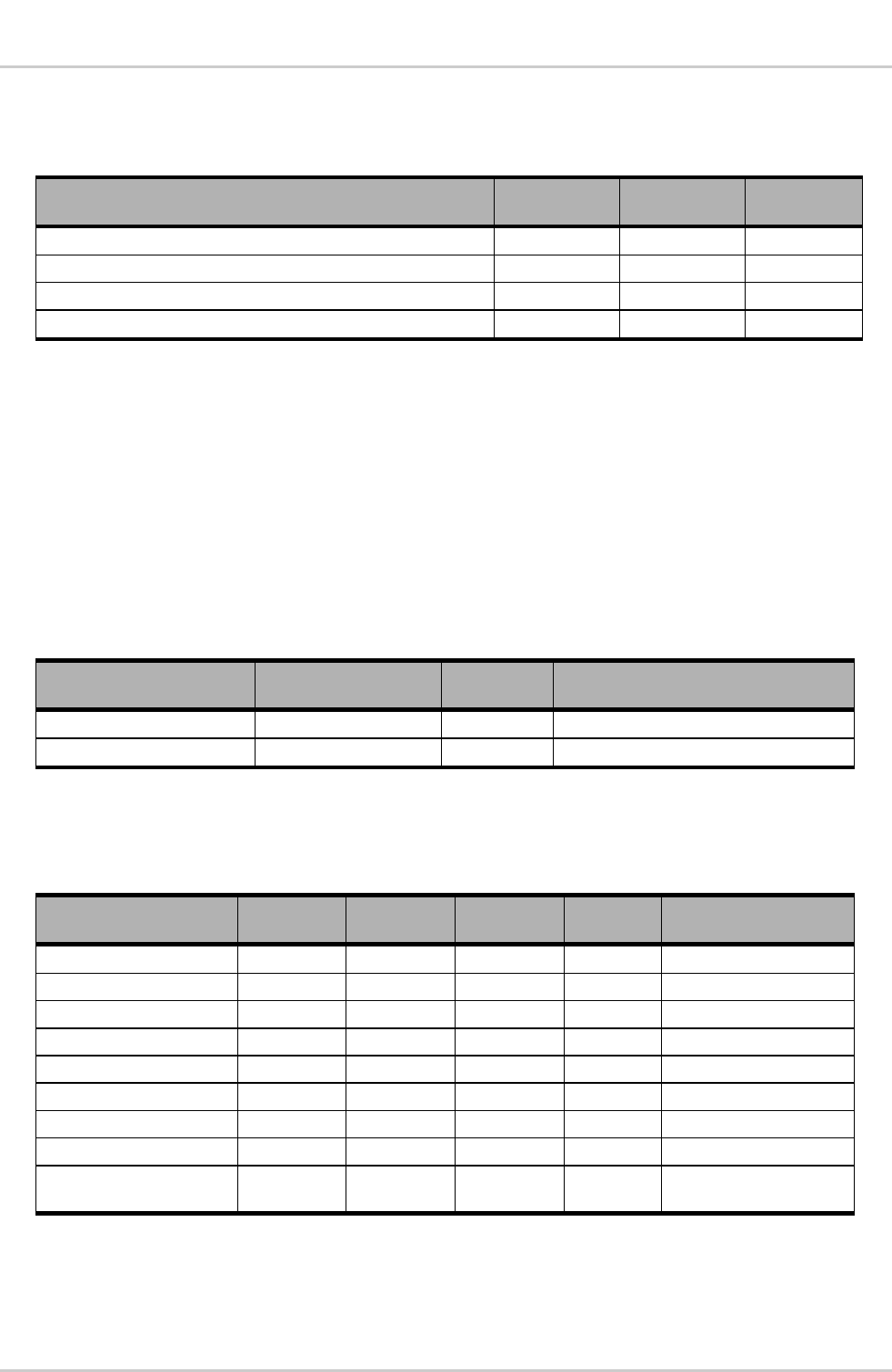
41110555 Rev 1.0 November 01, 2017 31
Product Technical Specification
Detailed Interface Specifications
Refer to the following table for the electrical characteristics of the RESET_IN_N interface.
Table 23. RESET_IN_N Electrical Characteristics
Parameter
Minimum
Typical
Maximum
Input Voltage-Low (V)
-
0.51 (TBC)
Input Voltage-High (V)
1.33 (TBC)
-
2.2 (TBC)
Reset assertion time (ms)
20 (TBC)
-
-
Power-up period (ms) from RESET_IN_N falling edge*
2000 (TBC)
-
-
* With the PWR_ON_N signal at low level.
3.11. Analog to Digital Converter (ADC)
Two Analog to Digital Converter inputs, ADC0 and ADC1, are provided by AirPrime HL77xx modules.
These converters are 8-bits resolution ADCs ranging from 0 to 1.8V.
Typical ADC use is for monitoring external voltage, wherein an application is used to safely power OFF
an external supply in case of overvoltage.
Refer to the following table for the pad description of the ADC interface.
Table 24. ADC Pad Description
Pad Number
Signal Name
I/O
Description
24
ADC1
I
Analog to digital converter
25
ADC0
I
Analog to digital converter
Refer to the following table for the electrical characteristics of the ADC interface.
Table 25. ADC Electrical Characteristics
Parameter
Minimum
Typical
Maximum
Unit
Remarks
ADCx Resolution
-
8
-
bits
Conversion Rate
-
-
2
MHz
Input Voltage Range
0
-
1.8
V
General purpose input
Integral Nonlinearity
-
± 1
± 2
LSB
Differential Nonlinearity
-
± 0.5
± 1
LSB
Offset Error
-
± 1
± 2
LSB
%FS
Gain Error
-
± 1
± 2
LSB
%FS
Input Resistance
43
52
61
kΩ
Input Capacitance
during sampling phase
-
3
pF
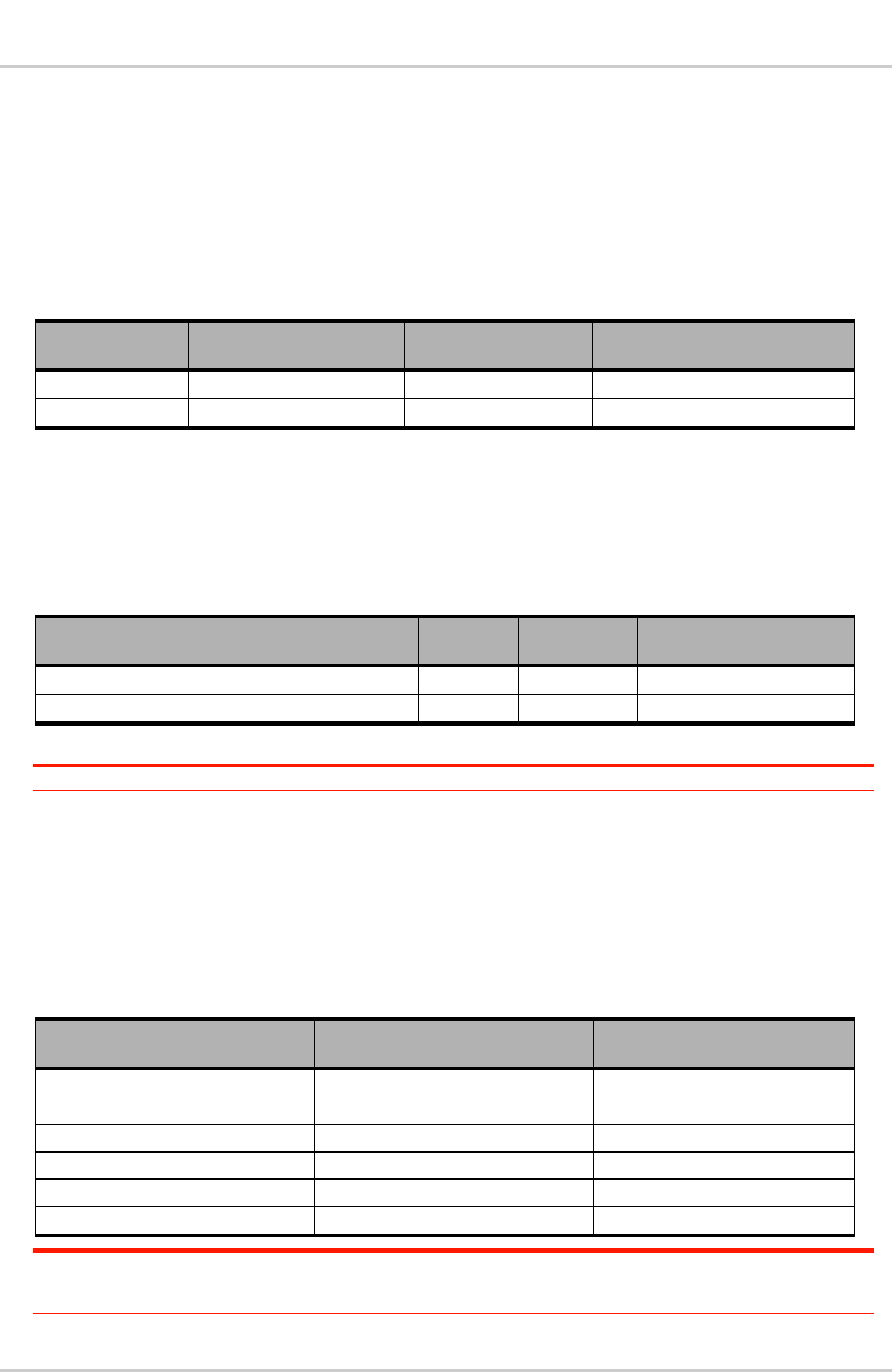
41110555 Rev 1.0 November 01, 2017 32
Product Technical Specification
Detailed Interface Specifications
3.12. Clock Interface
The AirPrime HL77xx modules support two digital clock interfaces.
Enabling or disabling the clock out feature can be done using AT commands. For more information
about AT commands, refer to document [2] AirPrime HL77xx AT Commands Interface Guide.
Refer to the following table for the pad description of the clock out interfaces.
Table 26. Clock Interface Pad Description
Pad Number
Signal Name
I/O
I/O Type
Description
22
GNSS_FREQ_OUT
O
1.8V
26MHz Digital Clock output
23
32K_CLKOUT
O
1.8V
32.768kHz Digital Clock output
3.13. Debug Interface
The AirPrime HL77xx modules provide a 2-wire debug port interface.
Table 27. Software Trace Pad Description
Pad Number
Signal Name*
I/O*
I/O Type
Description
44
DEBUG_TX
O
1.8V
Debug Transmit Data
51
DEBUG_RX
I
1.8V
Debug Receive Data
* According to module view.
Note: It is strongly recommended to provide access through Test Points to this interface.
3.14. JTAG Interface
The JTAG interface provides debug access to the core of the AirPrime HL77xx modules. These JTAG
signals are accessible through solder-able test points.
Refer to the following table for the pad description of the JTAG interface.
Table 28. JTAG Pad Description
Pad Number
Signal Name
Function
236
JTAG_RESET
JTAG RESET
237
JTAG_TCK
JTAG Test Clock
238
JTAG_TDO
JTAG Test Data Output
239
JTAG_TMS
JTAG Test Mode Select
240
JTAG_TRST
JTAG Test Reset
241
JTAG_TDI
JTAG Test Data Input
Note: It is recommended to provide access through Test Points to this interface the JTAG pads (for Failure
Analysis debugging). All signals listed in the table above should be outputs on the customer board to
allow JTAG debugging.
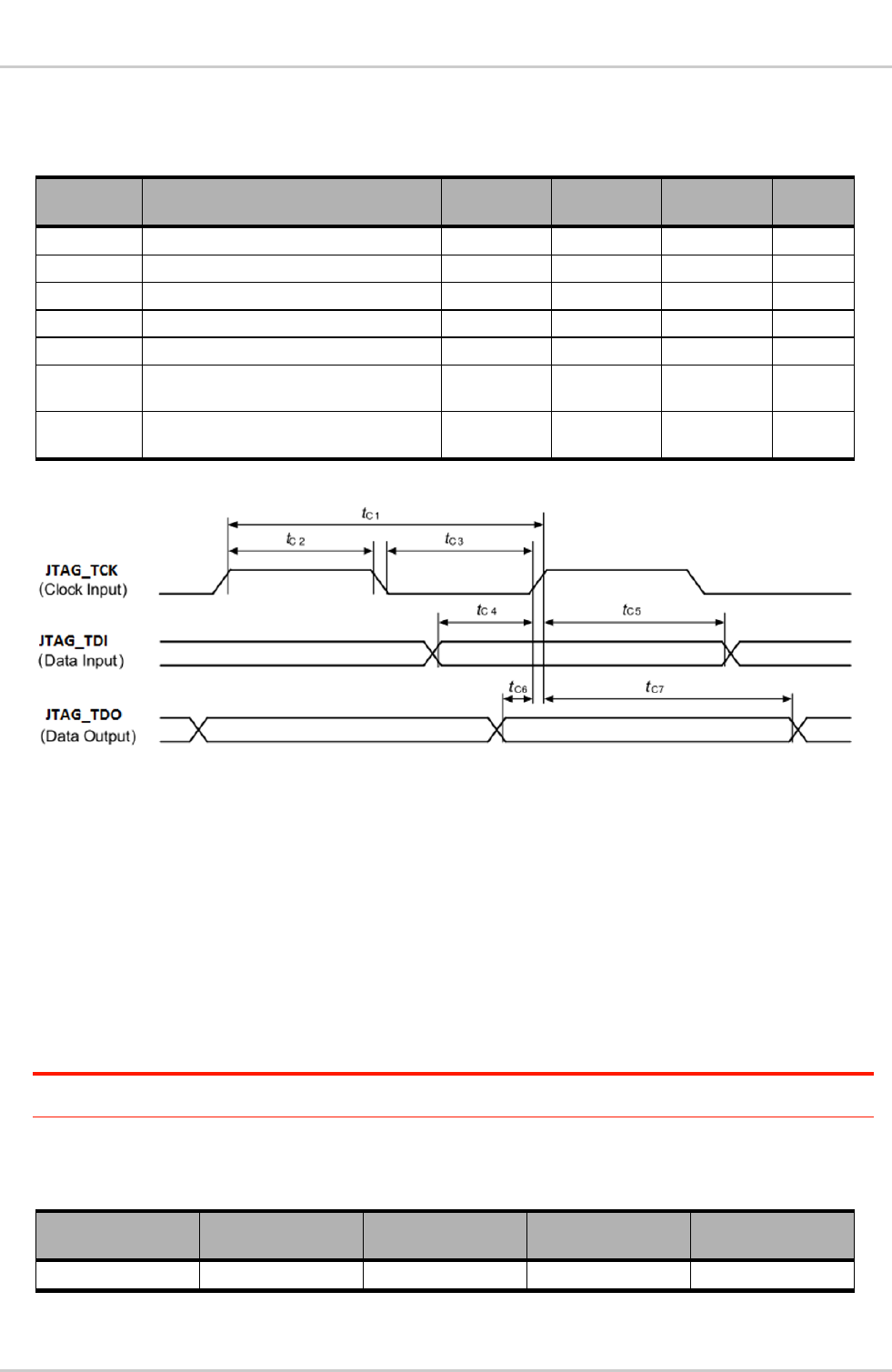
41110555 Rev 1.0 November 01, 2017 33
Product Technical Specification
Detailed Interface Specifications
Refer to the following table for the electrical characteristics of the JTAG interface.
Table 29. JTAG Electrical Characteristics
Symbol
Parameter
Minimum
Typical
Maximum
Unit
Ftck
JTAG_TCK clock period
0.038 (TBC)
26 (TBC)
78 (TBC)
MHz
tc2
JTAG_TCK clock period high
12 (TBC)
-
-
ns
tc3
JTAG_TCK clock period low
12 (TBC)
-
-
ns
tc4
JTAG_TDI setup time to JTAG_TCK
12 (TBC)
-
-
ns
tc5
JTAG_TDI hold time from JTAG_TCK
10 (TBC)
-
-
ns
tc6
JTAG_TDO valid before JTAG_TCK
low-end
-
0 (TBC)
-
s
tc7
JTAG_TDO valid after JTAG_TCK
high begin
-
20 (TBC)
-
ns
Figure 7. JTAG Timing Waveform
3.15. Wake Up Signal (WAKE-UP)
The AirPrime HL77xx modules provide one WAKE-UP signal.
The WAKE-UP signal is used to wake the system up from ultra-low power modes (from OFF or Sleep
modes, FAST_SHUTDOWN, or after a software power off). This signal should be set to high level
(external 1.8V) for at least (TBD) ms until the system is active to wake the module up from these
modes.
The system will not be allowed to go into ultra-low or off mode for as long as this signal is kept high.
By default, the software waits for a high state to wake-up.
Note: The module has an embedded pull-down on this signal. After a power off mode, the only way to
restart the module is to perform a hardware power off then power on if this signal is not used.
Refer to the following table for the pad description of the WAKE-UP interface.
Table 30. WAKE-UP Pad Description
Pad Number
Signal Name
I/O
I/O Type
Description
19
WAKE-UP
I
1.8V
WAKE-UP
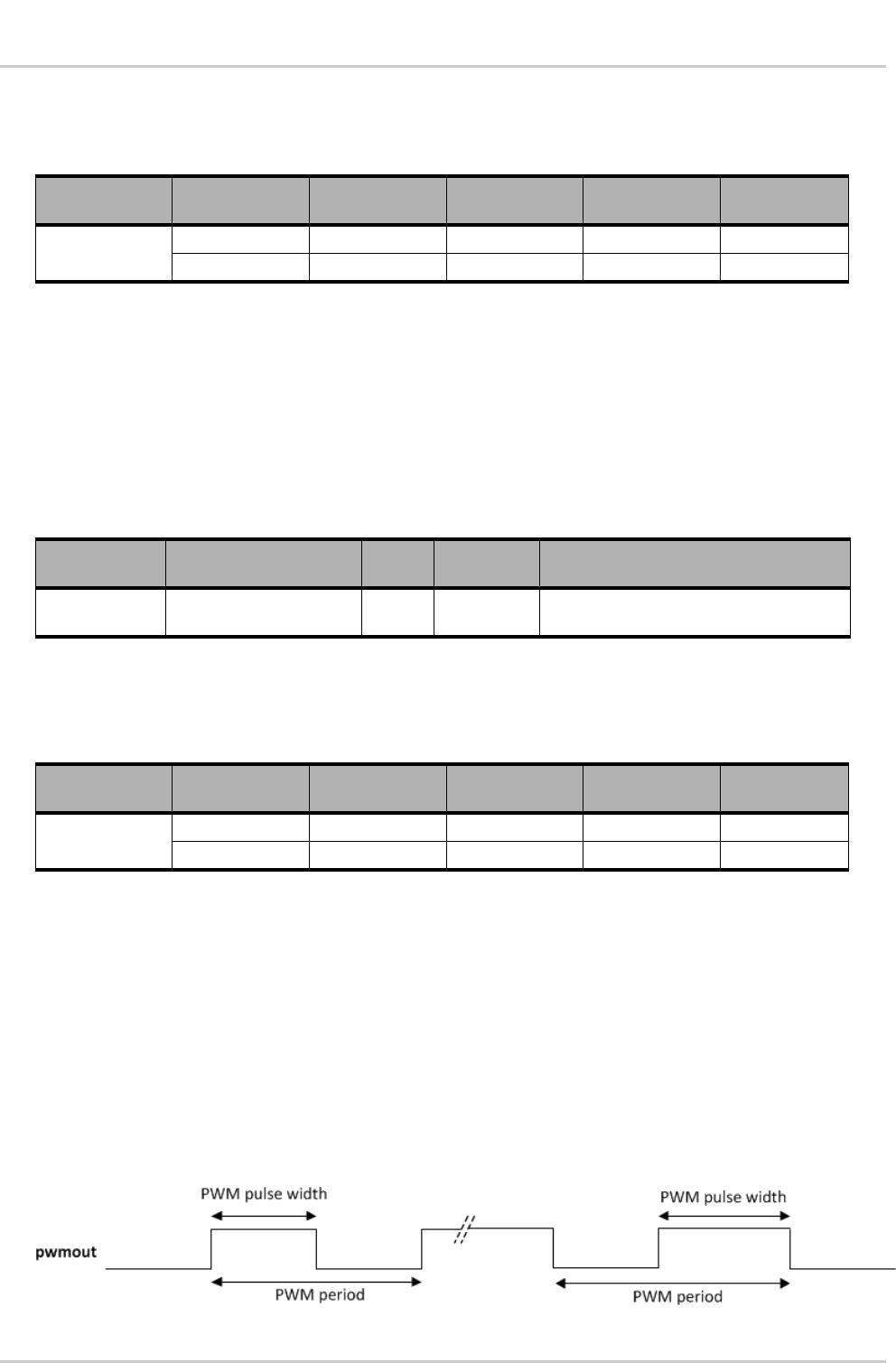
41110555 Rev 1.0 November 01, 2017 34
Product Technical Specification
Detailed Interface Specifications
Refer to the following table for the electrical characteristics of the WAKE-UP interface.
Table 31. WAKE-UP Electrical Characteristics
I/O Type
Parameter
Minimum
Typical
Maximum
Unit
Digital
VIL
0.3
V
VIH
0.7 x VDDIO*
V
* VDDIO = VGPIO = 1.8 V.
3.16. Fast Shutdown Signal (FAST_SHUTDOWN)
The AirPrime HL77xx modules provide one FAST_SHUTDOWN signal.
Refer to the following table for the pad description of the FAST_SHUTDOWN interface.
Table 32. FAST_SHUTDOWN Pad Description
Pad Number
Signal Name
I/O
I/O Type
Description
65
FAST_SHUTDOWN
I
1.8V
Shuts down the module without
deregistration from the network
Refer to the following table for the electrical characteristics of the FAST_SHUTDOWN interface.
Table 33. FAST_SHUTDOWN Electrical Characteristics
I/O Type
Parameter
Minimum
Typical
Maximum
Unit
Digital
VIL
0.3xVDDIO
V
VIH
0.7 x VDDIO
V
* VDDIO = VGPIO = 1.8 V.
3.17. PWM
The AirPrime HL77xx modules provide one PWM signal that can be used in conjunction with an
external transistor for driving a vibrator, or a backlight LED.
The PWM uses two 7-bit unsigned binary numbers – one for the output period and one for the pulse
width or the duty cycle.
The relative timing for the PWM output is shown in the figure below.
Figure 8. Relative Timing for the PWM Output
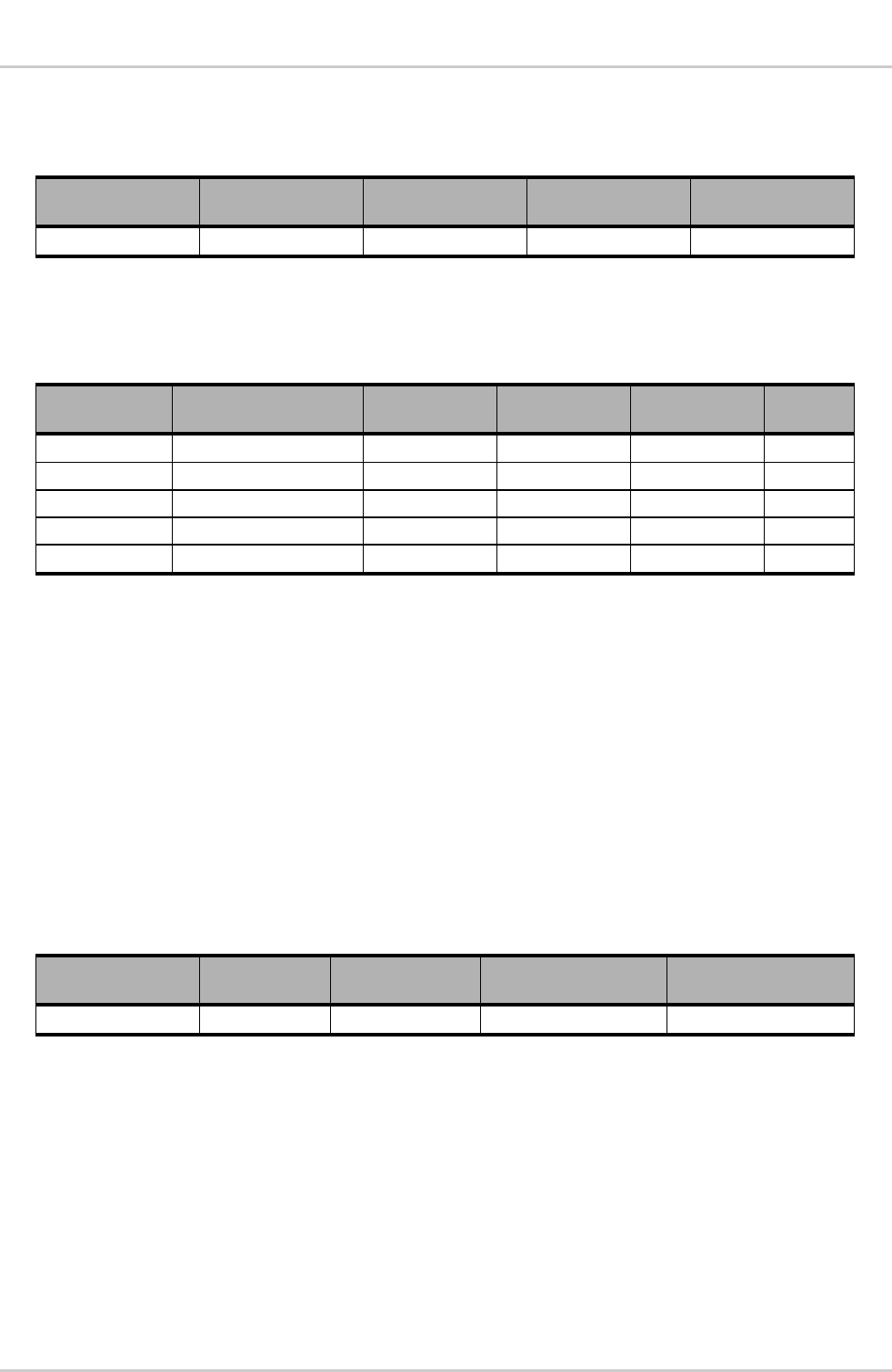
41110555 Rev 1.0 November 01, 2017 35
Product Technical Specification
Detailed Interface Specifications
Refer to the following table for the pad description of the PWM interface.
Table 34. PWM Pad Description
Pad Number
Signal Name
I/O
I/O Type
Description
58
PWM0
O
1.8V
PWM output
Refer to the following table for the electrical characteristics of the PWM interface.
Table 35. PWM Electrical Characteristics (TBC)
Parameter
Conditions
Minimum
Typical
Maximum
Unit
VOH
High impedance load
--
1.8
-
V
VOL
-
-
-
0.2
V
IPEAK
-
-
-
8
mA
Frequency
-
25.6
-
1625
kHz
Duty cycle
-
1
-
99
%
3.18. RF Interface
The RF interface of the AirPrime HL77xx modules allow the transmission of RF signals. This interface
has a 50Ω nominal impedance.
3.18.1. RF Connection
A 50Ω (with maximum VSWR 1.1:1, and 0.5dB loss) RF track is recommended to be connected to
standard RF connectors such as SMA, UFL, etc. for antenna connection.
Refer to the following table for the pad description of the RF interface.
Table 36. RF Pad Connection
Pad Number
RF Signal
Impedance
VSWR Rx (max)
VSWR Tx (max)
49
RF_MAIN
50Ω
1.5:1
1.5:1
3.18.2. RF Performances
RF performances are compliant with 3GPP recommendation TS 36.101.
The following table shows typical RX sensitivity with the reference sensitivity level at 95% of the
maximum throughput, using the following 3GPP test conditions:
• 3GPP Pattern
• QPSK modulation
• 4RB_DL, 6RB_UL
• 23dBm UL power

41110555 Rev 1.0 November 01, 2017 36
Product Technical Specification
Detailed Interface Specifications
Table 37. Typical RX Sensitivity
LTE Band
dBm/15kHz
dBm/1.4MHz
3GPP Limit (dBm)
2
-126
-107, 4
-100.3
3
-126
-107, 4
-99.3
4
-125.5
-106, 9
-102.3
12
-125.5
-106, 9
-99.3
13
-126.5
-107, 9
-99.3
28
-126.5
-107, 9
-100.7
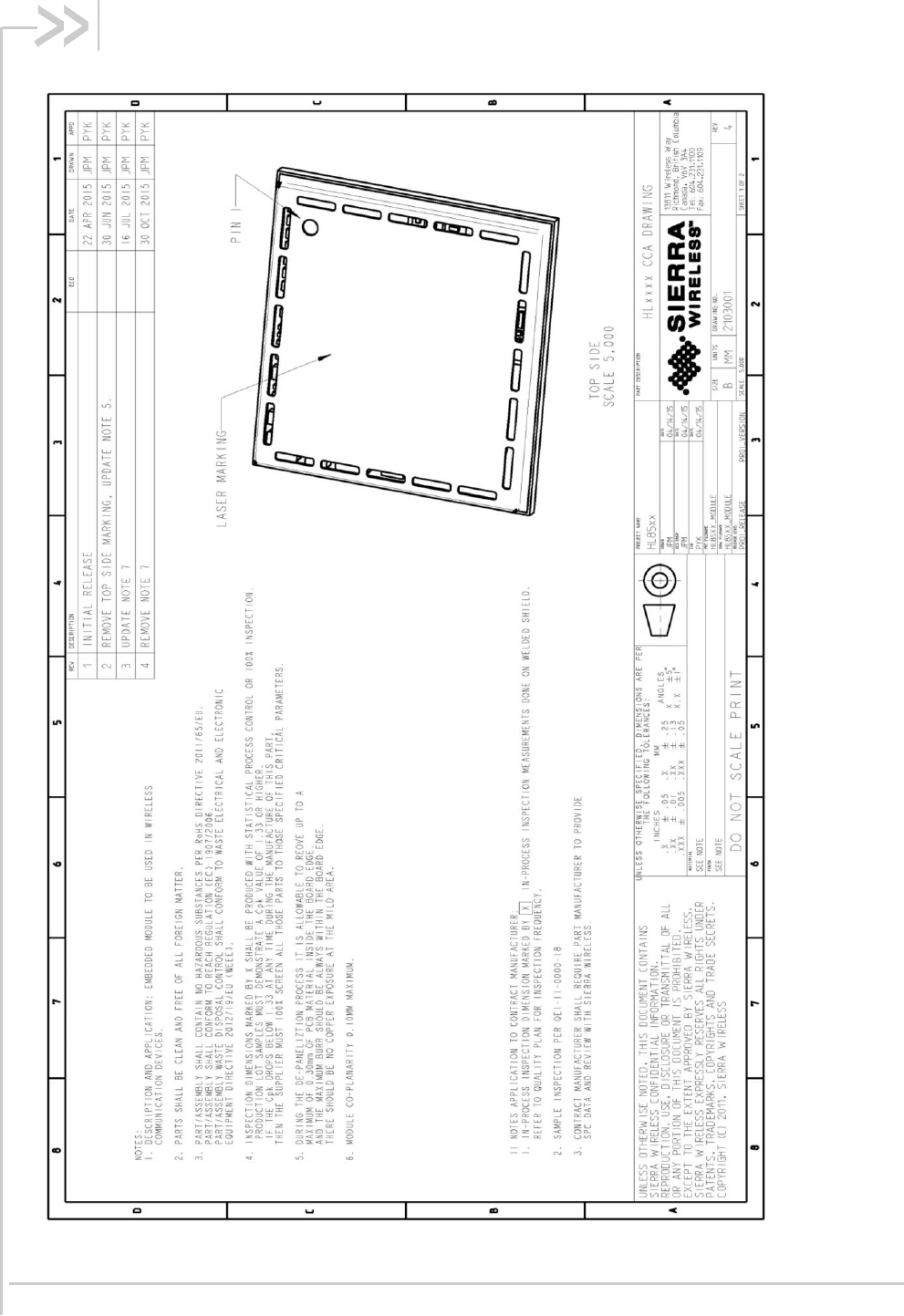
41110555 Rev 1.0 November 01, 2017 37
4. Mechanical Drawings
Figure 9. Mechanical Drawing
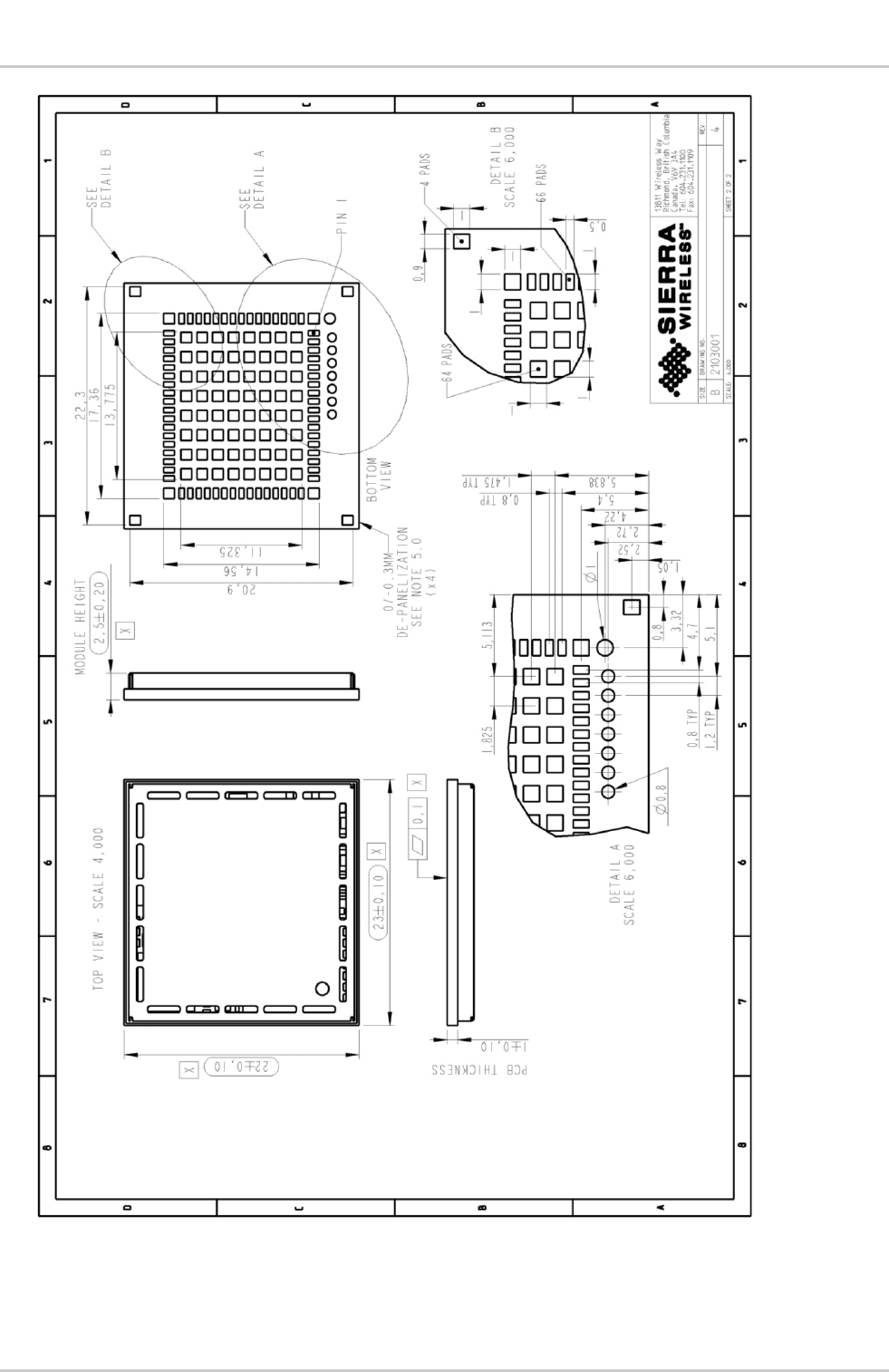
41110555 Rev 1.0 November 01, 2017 38
Product Technical Specification
Mechanical Drawings
Figure 10. Dimensions and Footprint Drawing

41110555 Rev 1.0 November 01, 2017 39
5. Design Guidelines
5.1. Power-Up Sequence
Apply voltage to the VBATT pin for at least 10 ms (TBC) prior to applying a low-level logic to the
PWR_ON_N pin.
Apply a low-level logic to the PWR_ON_N pin (pin 59); within approximately 25ms, VGPIO will appear
to be at 1.8V. Either UART1 or the USB interface could be used to send AT commands. The AT
command interface is available in about 25 seconds (TBC) after PWR_ON_N for either UART or USB.
When using UART, the AT command interface is available after the transition of UART1_CTS from
high to low level.
When using a USB connection, the AirPrime HL77xx module will start communicating with the host
after USB enumeration. The time when AT commands can be sent will depend on the initialization
time on the USB host.
Note: As PWR_ON_N is internally pulled up with 1MΩ, an open collector or open drain transistor must be
used for ignition.
5.2. Module Switch-Off
AT commands AT+CPOF and AT+CPWROFF enables the user to properly switch the AirPrime HL77xx
module off.
5.3. Sleep Mode Management
AT command AT+KSLEEP enables sleep mode configuration; this command can only be used with
serial link UART1.
AT+KSLEEP=0:
• The module is active when the DTR signal is active (low electrical level).
• When DTR is deactivated (high electrical level), the module enters sleep mode after a while.
• On DTR activation (low electrical level), the module wakes up.
AT+KSLEEP=1:
• The module determines when it enters sleep mode (when no more tasks are running).
• Any character on the serial link wakes the module up. The first character is lost.
AT+KSLEEP=2: The module never enters sleep mode.
Note: The DTR signal must only be set to low-level “0” to wake up from Sleep mode. This pin must be set
to high-level “1” (1.8V) or left floating (internal pull-up) for all other modes.
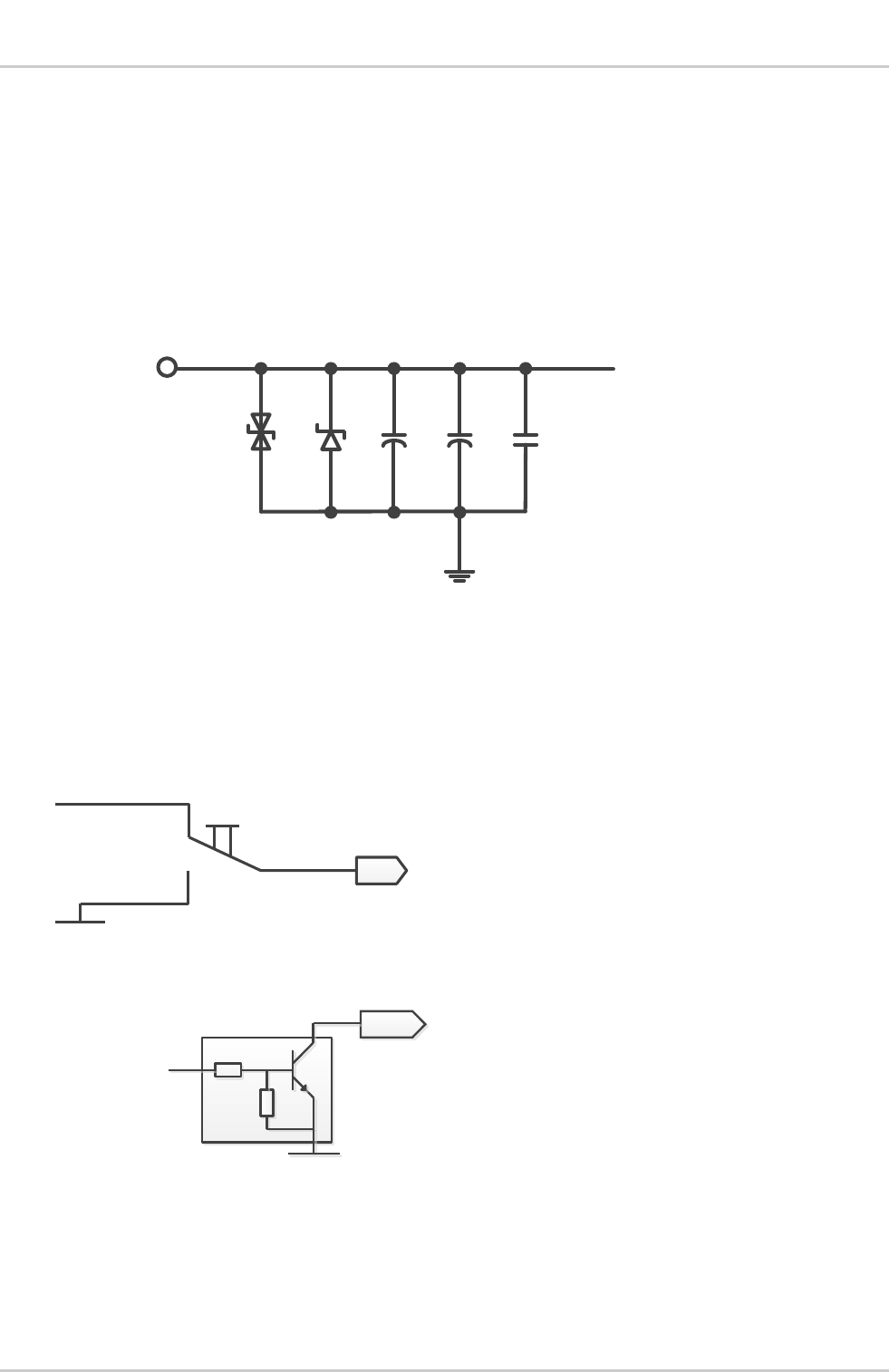
41110555 Rev 1.0 November 01, 2017 40
Product Technical Specification
Design Guidelines
5.4. Power Supply Design
The AirPrime HL77xx module should not be supplied with voltage over 4.5V even temporarily or
however briefly.
If the system’s main board power supply unit is unstable or if the system’s main board is supplied over
4.5V, even in the case of transient voltage presence on the circuit, the module’s power amplifier may
be severely damaged.
To avoid such issues, add a voltage limiter to the module’s power supply lines so that VBATT and
VBATT_PA signal pads will never receive a voltage surge over 4.5V. The voltage limiter can be as
simple as a Zener diode with decoupling capacitors as shown in the diagram below.
Power Supply VBATT/VBATT_PA
D404
0.5 pF
D405
C404
1.5 mF +
+
C405
150 µF
C407
100 nF
Figure 11. Voltage Limiter Example
5.5. Power On Connection Examples
Refer to the following figures for PWR_ON_N connection examples using a switch and an open
collector transistor.
PWR_ON
X
GND
Switch
1
2
3
Figure 12. PWR_ON_N Connection Example with Switch
PWR_ON
GND
From application
MCU GPIO control
T1
Rohm DTC144EE
Figure 13. PWR_ON_N Connection Example with an Open Collector Transistor
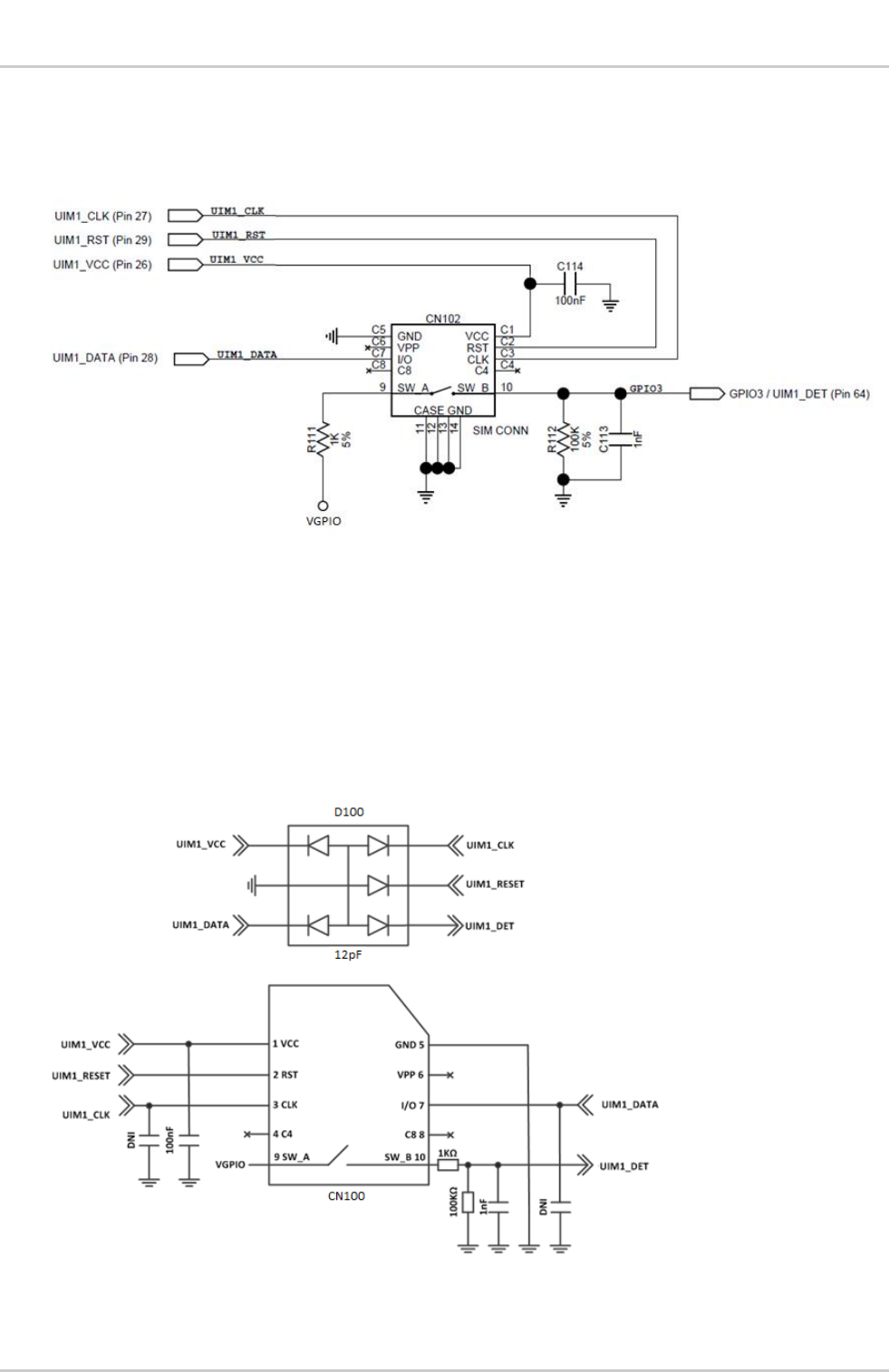
41110555 Rev 1.0 November 01, 2017 41
Product Technical Specification
Design Guidelines
5.6. USIM1 Application
The AirPrime HL77xx modules support one USIM1 slot.
Figure 14. Design Application with USIM1 Slot
5.7. EMC and ESD Guidelines for USIM1 Card
Decoupling capacitors must be added according to the drawing below, as close as possible to the
UIM1 card connectors on UIM1_CLK, UIM1_RESET, UIM1_VCC, UIM1_DATA and UIM1_DET
signals to avoid EMC issues and to comply with the requirements of ETSI and 3GPP standards
covering the USIM1 electrical interface.
A typical schematic including USIM1 detection is provided below.
Figure 15. EMC and ESD Components Close to the USIM1.
Sierra Wireless recommends using a ESDALC6V1-5P6 ESD diode for D100.
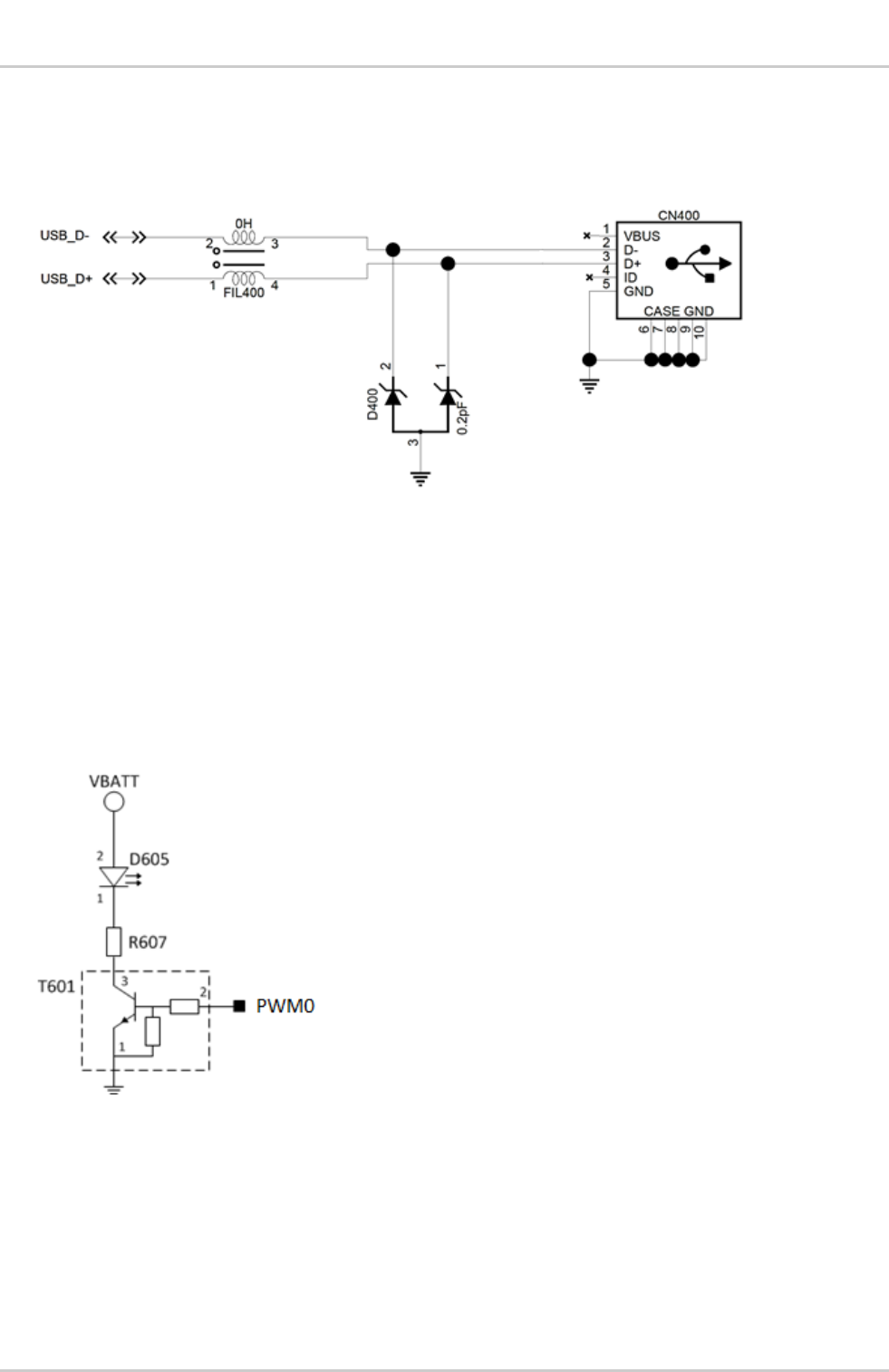
41110555 Rev 1.0 November 01, 2017 42
Product Technical Specification
Design Guidelines
5.8. ESD Guidelines for USB
When the USB interface is externally accessible, it is required to have ESD protection on the USB_D+
and USB_D- signals.
Figure 16. ESD Protection for USB
Sierra Wireless recommends using the following components:
• FIL400: 90Ω DLP0NSN900HL2L EMC filter
• D400: RCLAMP0503N or ESD5V3U2U-03LRH ESD diode
5.9. PWM
Refer to the following figures for examples of using the PWM0 signal for driving an LED or a BUZZER.
Figure 17. Example of an LED Driven by the PWM0 Output
The value of R607 can be harmonized depending on LED (D605) characteristics.
The recommended digital transistor to use for T601 is the DTC144EE from ROHM.
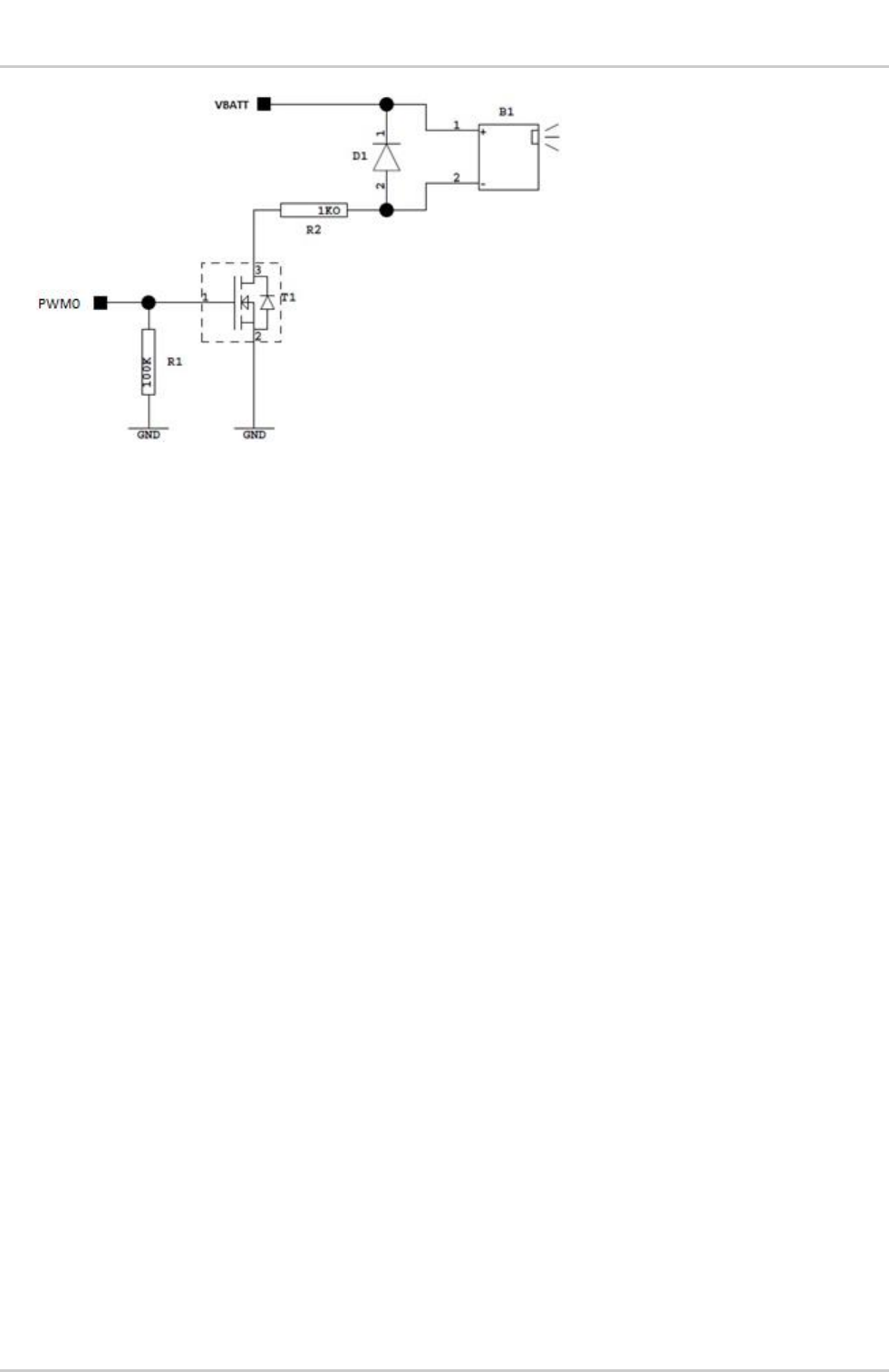
41110555 Rev 1.0 November 01, 2017 43
Product Technical Specification
Design Guidelines
Figure 18. Example of a BUZZER Driven by the PWM0 Output
The recommended MOS transistor to use for T1 is the RUM003N02 from ROHM, and the
recommended diode to use for D1 is the BAS16W from NXP.
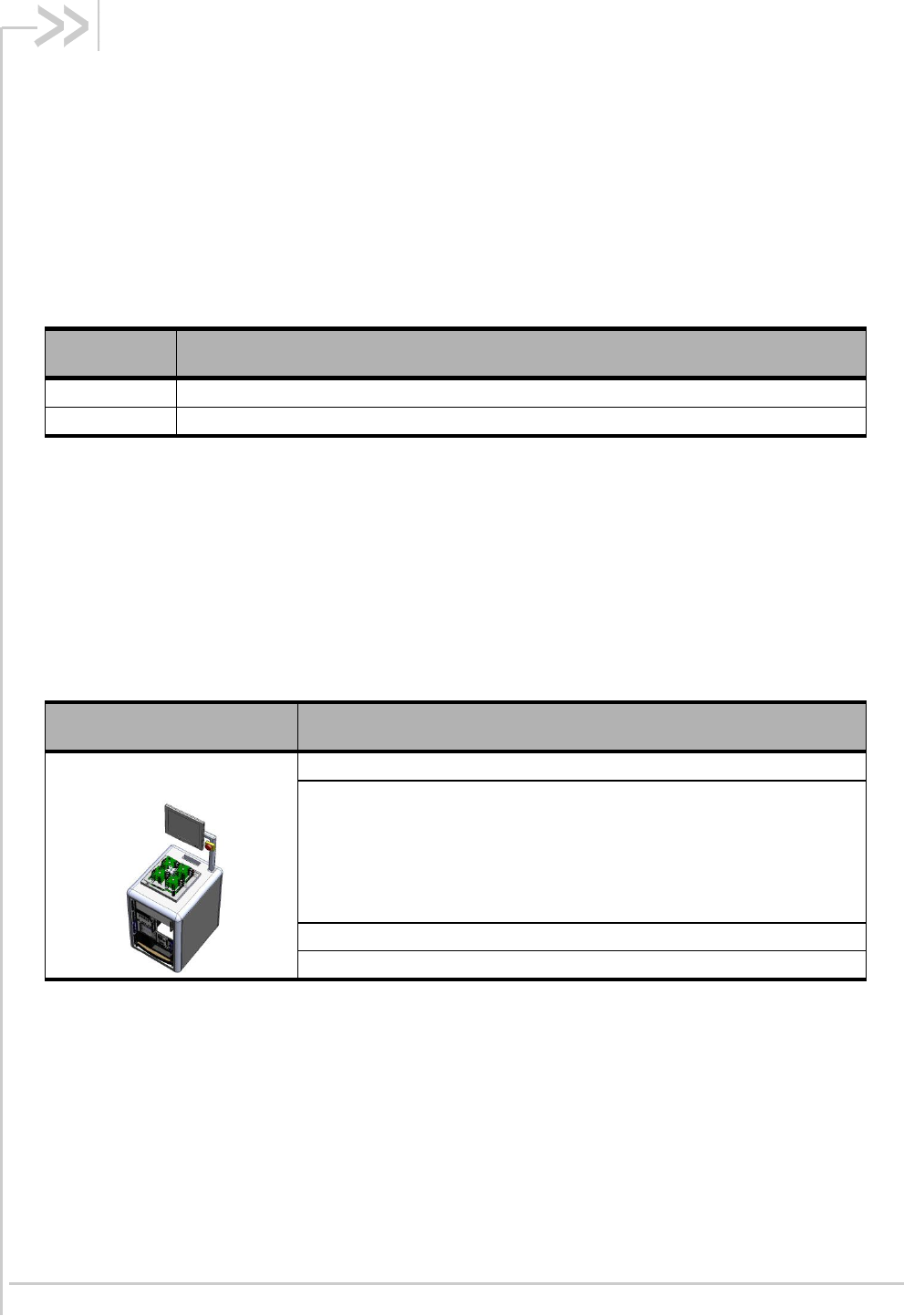
41110555 Rev 1.0 November 01, 2017 44
6. Reliability Specification (TBC)
AirPrime HL77xx modules will be tested against the Sierra Wireless Industrial Reliability Specification
defined below.
6.1. Reliability Compliance
AirPrime HL77xx modules connected on a development kit board application are targeted to be
compliant with the following requirements.
Table 38. Standards Conformity
Abbreviation
Definition
IEC
International Electro technical Commission
ISO
International Organization for Standardization
6.2. Reliability Prediction Model
6.2.1. Life Stress Test
The following tests the AirPrime HL77xx modules’ product performance.
Table 39. Life Stress Test
Designation
Condition
Performance Test
PT3T & PTRT
Standard: N/A
Special conditions:
• Temperature:
▪ Class A: -30°C to +70°C
▪ Class B: -40°C to +85°C
▪ Rate of temperature change: ± 3°C/min
• Recovery time: 3 hours
Operating conditions: Powered
Duration: 14 days
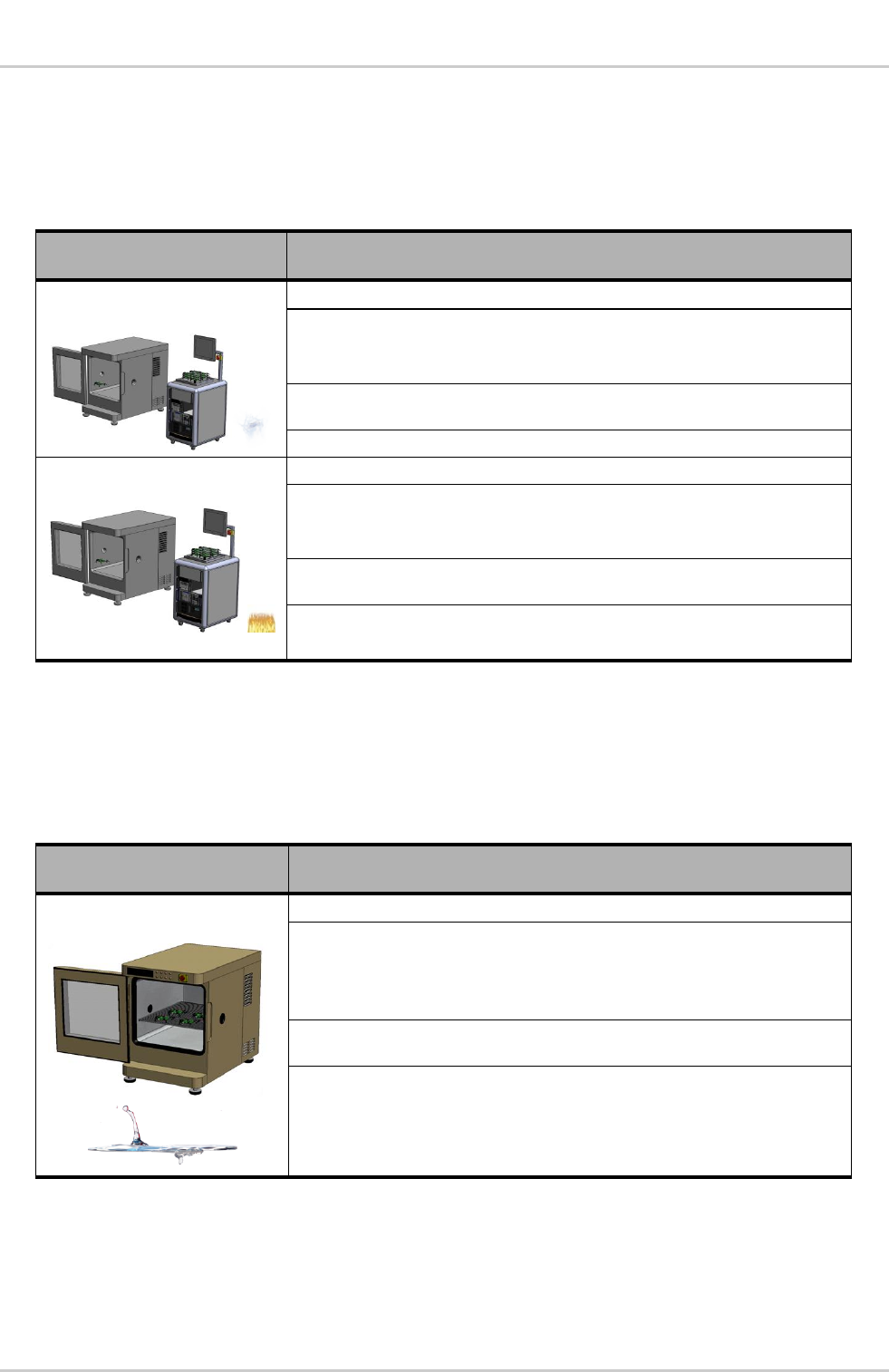
41110555 Rev 1.0 November 01, 2017 45
Product Technical Specification
Reliability Specification (TBC)
6.2.2. Environmental Resistance Stress Tests
The following tests the AirPrime HL77xx modules’ resistance to extreme temperature.
Table 40. Environmental Resistance Stress Tests
Designation
Condition
Cold Test Active
COTA
Standard: IEC 680068-2-1, Test Ad
Special conditions:
• Temperature: -40°C
• Temperature variation: 1°C/min
Operating conditions: Powered ON with a power cycle of 1 minute ON and
2 minutes OFF
Duration: 3 days
Resistance to Heat Test
RH
Standard: IEC 680068-2-2, Test Bb
Special conditions:
• Temperature: +85°C
• Temperature variation: 1°C/min
Operating conditions: Powered ON with a power cycle of 15 minutes ON
and 15 minutes OFF
Duration: 50 days
6.2.3. Corrosive Resistance Stress Tests
The following tests the AirPrime HL77xx modules’ resistance to corrosive atmosphere.
Table 41. Corrosive Resistance Stress Tests
Designation
Condition
Humidity Test
HUT
Standard: IEC 60068-2-3, Test Ca
Special conditions:
• Temperature: +65°C
• RH: 95%
• Temperature variation: 3 +/- 0.6°C/min
Operating conditions: Powered on, DUT is powered up for 15 minutes and
OFF for 15 minutes
Duration: 10 days
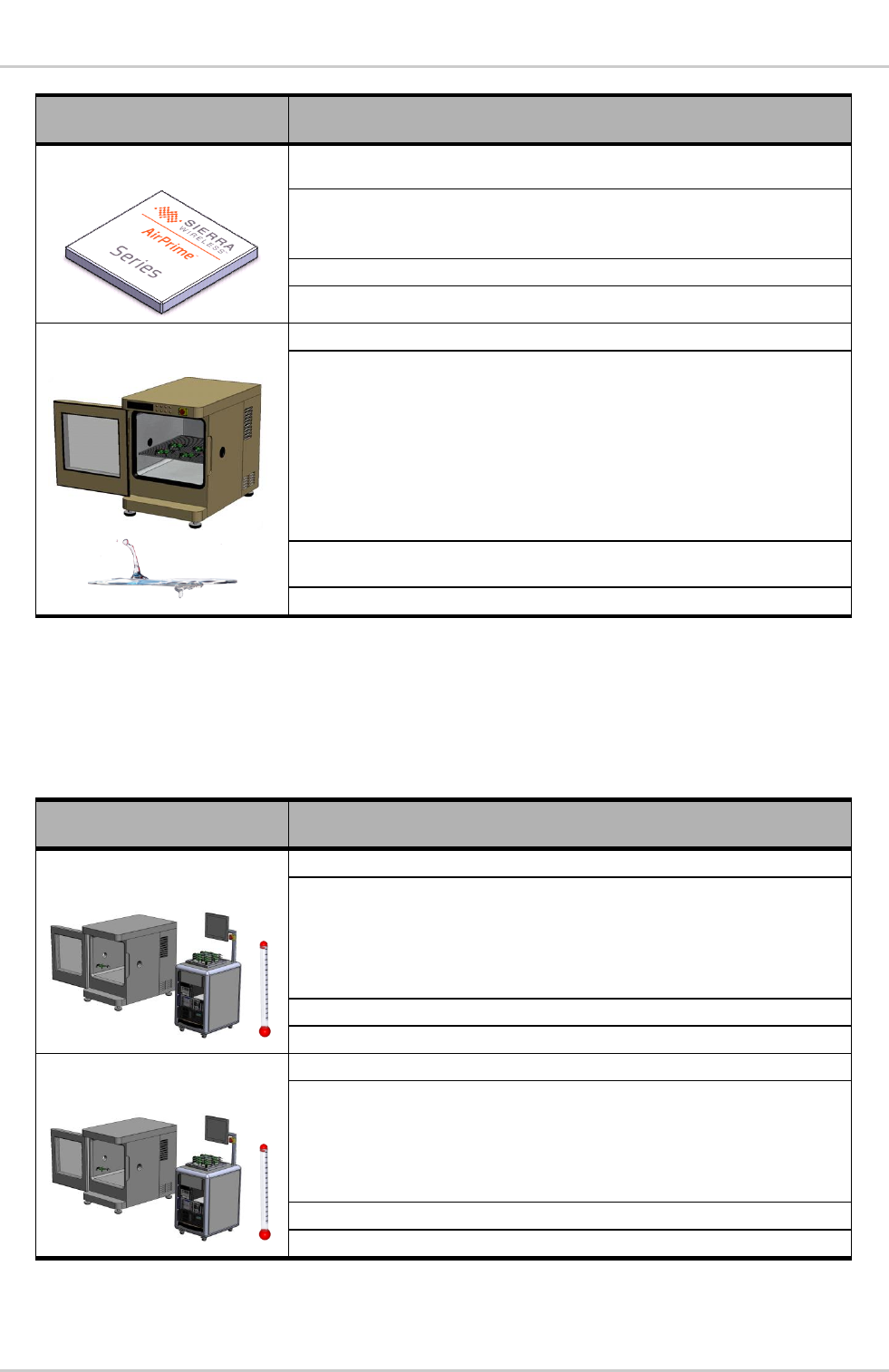
41110555 Rev 1.0 November 01, 2017 46
Product Technical Specification
Reliability Specification (TBC)
Designation
Condition
Component Solder Wettability
CSW
Standard: JESD22 – B102, Method 1/Condition C, Solderability Test
Method
Special conditions:
• Test method: Dip and Look Test with Steam preconditioning 8
h+/-15min. dip for 5 +0/-0.5 seconds
Operating conditions: Un-powered
Duration: 1 day
Moist Heat Cyclic Test
MHCT
Standard: IEC 60068-2-30, Test Db
• Special conditions:
• Upper temperature: +40 ± 2°C
• Lower temperature: +25 ± 5°C
• RH:
▪ Upper temperature: 93%
▪ Lower temperature: 95%
• Number of cycles: 21 (1 cycle/24 hours)
• Temperature Variation: 3 +/- 0.6°C/min
Operating conditions: Powered ON for 15 minutes during each 3 hours
ramp up and 3 hours ramp down (in middle) for every cycle
Duration: 21 days
6.2.4. Thermal Resistance Cycle Stress Tests
The following tests the AirPrime HL77xx modules’ resistance to extreme temperature cycling.
Table 42. Thermal Resistance Cycle Stress Tests
Designation
Condition
Thermal Shock Test
TSKT
Standard: IEC 60068-2-14, Test Na
Special conditions:
• Temperature: -30°C to +80°C
• Temperature Variation: less than 30s
• Number of cycles: 600
• Dwell Time: 10 minutes
Operating conditions: Un-powered
Duration: 9 days
Temperature Change
TCH
Standard: IEC 60068-2-14, Test Nb
Special conditions:
• Temperature: -40°C to +90°C
• Temperature Variation: 3 +/- 0.6°C/min
• Number of cycles: 400
• Dwell Time: 10 minutes
Operating conditions: Un-powered
Duration: 29 days
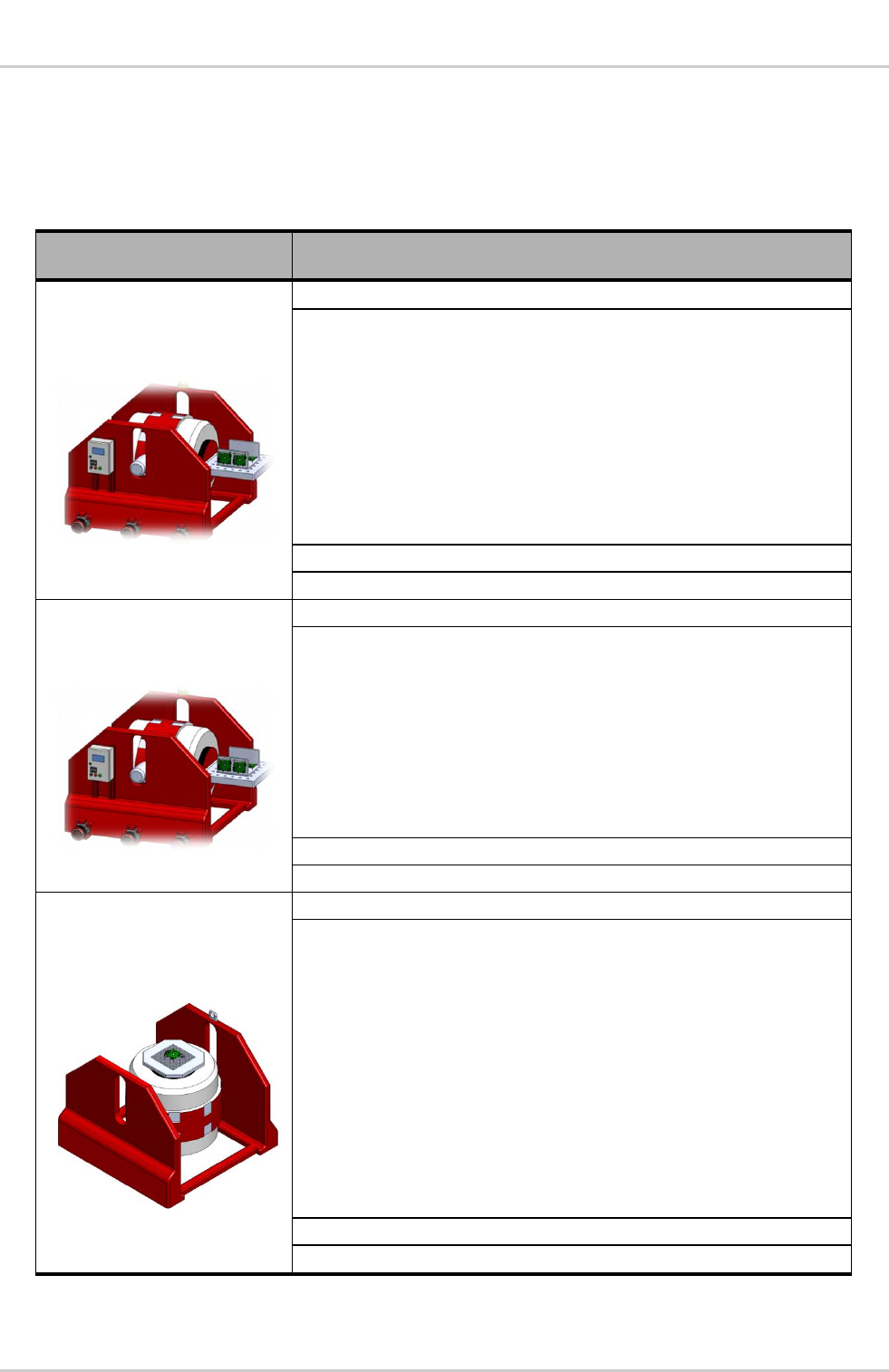
41110555 Rev 1.0 November 01, 2017 47
Product Technical Specification
Reliability Specification (TBC)
6.2.5. Mechanical Resistance Stress Tests
The following tests the AirPrime HL77xx modules’ resistance to vibrations and mechanical shocks.
Table 43. Mechanical Resistance Stress Tests
Designation
Condition
Sinusoidal Vibration Test
SVT
Standard: IEC 60068-2-6, Test Fc
Special conditions:
• Frequency range: 16 Hz to 1000 Hz
• Displacement: 0.35mm (peak-peak)
• Acceleration:
▪ 5G from 16 to 62 Hz
▪ 3G from 62 to 200 Hz
▪ 1G from 200 to 1000 Hz
• Sweep rate: 1 octave / cycle
• Number of Sweep: 20 sweeps/axis
• Sweep direction: ±X, ±Y, ±Z
Operating conditions: Un-powered
Duration: 2 days
Random Vibration Test
RVT
Standard: IEC 60068-2-64, Test Fh
Special conditions:
• Frequency range: 10 Hz – 2000 Hz
• Power Spectral Density in [(m/s²)²/Hz]
▪ g2/Hz at 10Hz
▪ g2/Hz at 250Hz
▪ 0.005 g2/Hz at 1000Hz
▪ 0.005 g2/Hz at 2000Hz
• Peak factor: 3
• Duration per Axis: 1 hr / axis
Operating conditions: Un-powered
Duration: 1 day
Mechanical Shock Test
MST
Standard: IEC 60068-2-27, Test Ea
Special conditions:
• Shock Test 1:
▪ Wave form: Half sine
▪ Peak acceleration: 30g
▪ Duration: 11ms
▪ Number of shocks: 8
▪ Direction: ±X, ±Y, ±Z
• Shock Test 2:
▪ Wave form: Half sine
▪ Peak acceleration: 100g
▪ Duration: 6ms
▪ Number of shocks: 3
▪ Direction: ±X, ±Y, ±Z
Operating conditions: Un-powered
Duration: 72 hours
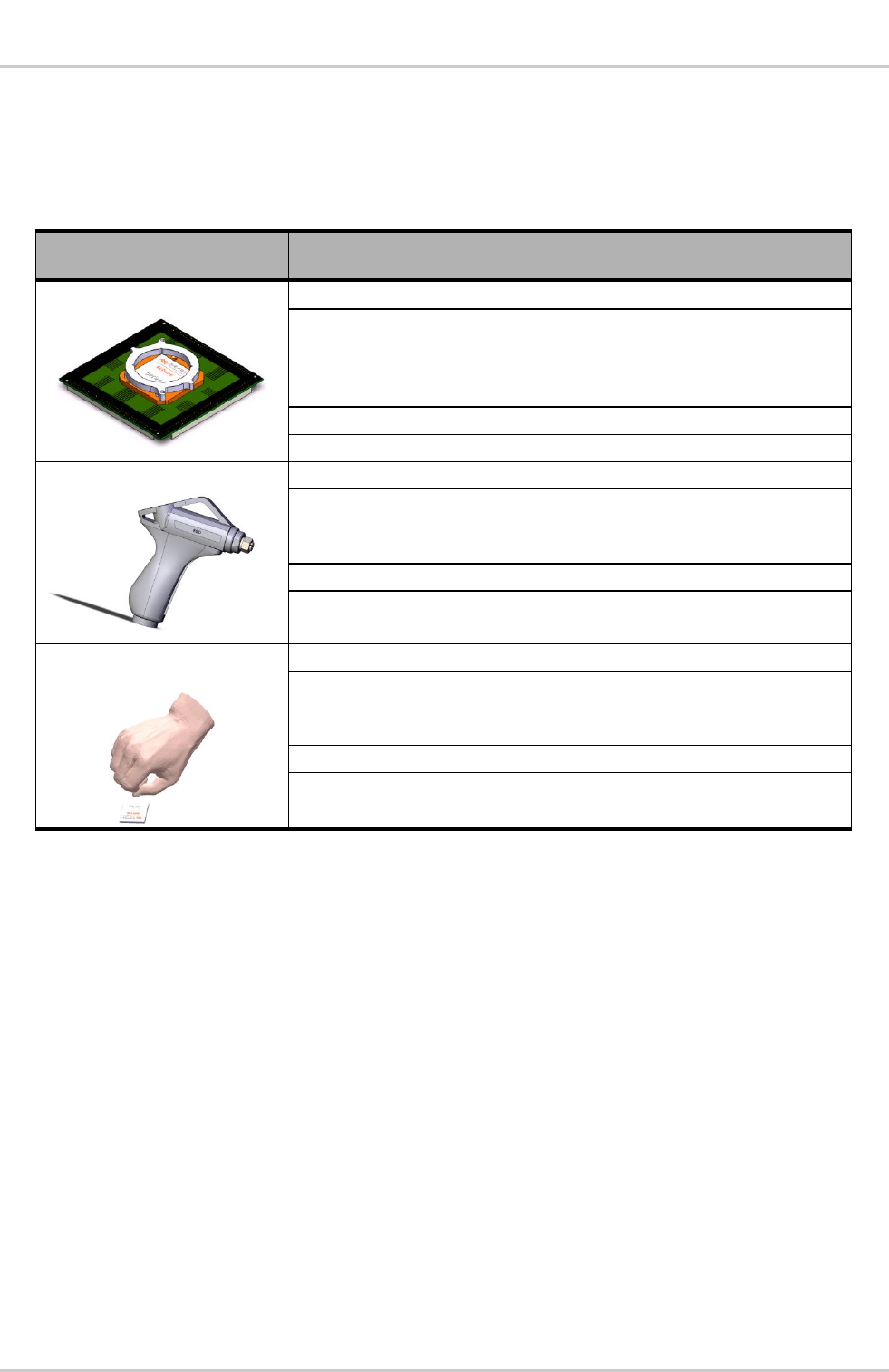
41110555 Rev 1.0 November 01, 2017 48
Product Technical Specification
Reliability Specification (TBC)
6.2.6. Handling Resistance Stress Tests
The following tests the AirPrime HL77xx modules’ resistance to handling malfunctions and damage.
Table 44. Handling Resistance Stress Tests
Designation
Condition
ESDC Test
Standard: JESD22-A114, JESD22-A115, JESD22-C101
Special conditions:
• HBM (Human Body Model): 1KV (Class 1C)
• MM (Machine Model): 200V
• CDM (Charged Device Model): 250V (Class II)
Operating conditions: Powered
Duration: 3 days
ESD Test
Standard: IEC 61000-4-2
Special conditions:
• Contact Voltage: ±2kV, ±4kV, ±6kV
• Air Voltage: ±2kV, ±4kV, ±8kV
Operating conditions: Powered
Duration: 3 days
Free Fall Test
FFT 1
Standard: IEC 60068-2-32, Test Ed
Special conditions:
• Number of drops: 2 drops per unit
• Height: 1m
Operating conditions: Un-powered
Duration: 6 hours
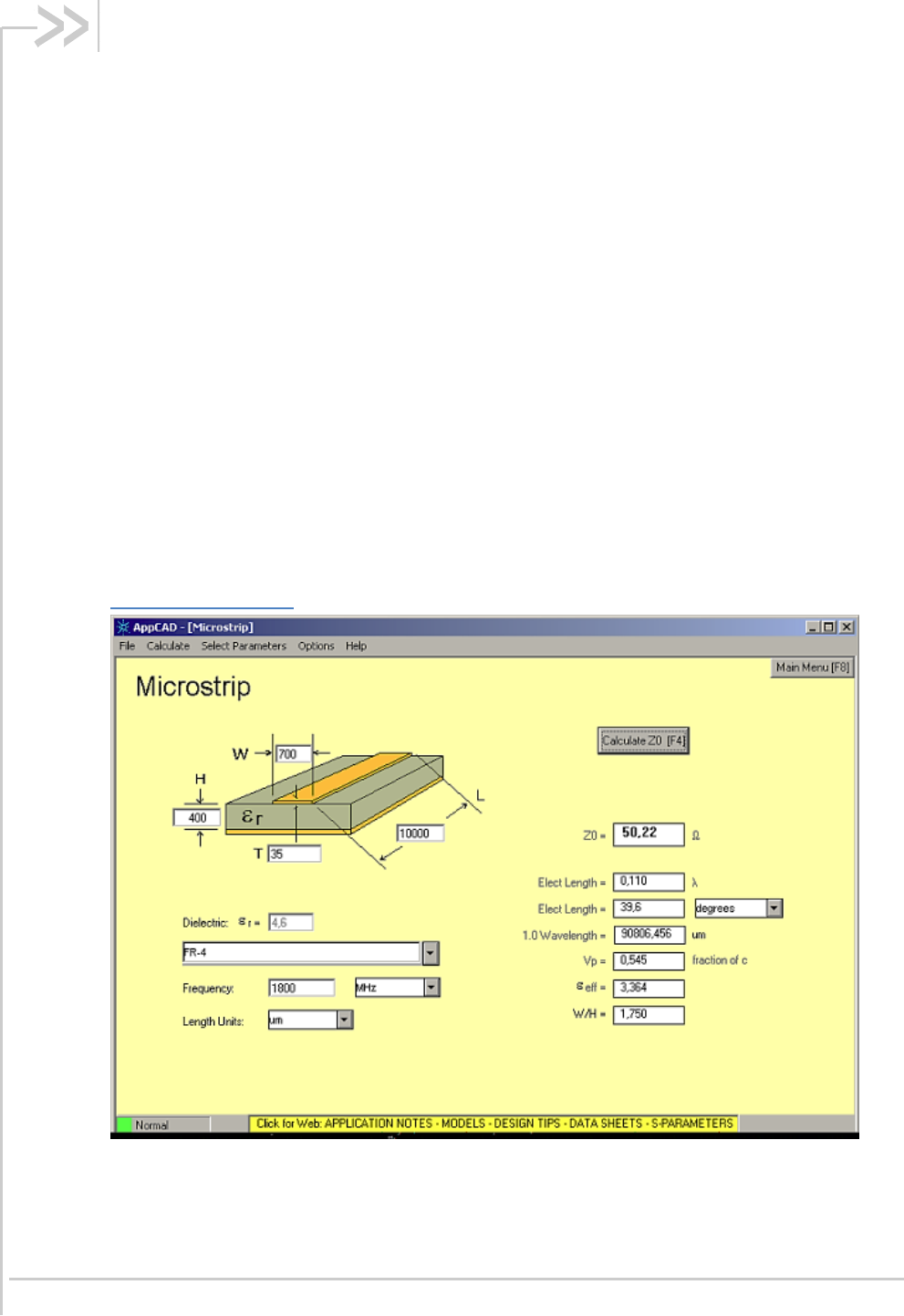
41110555 Rev 1.0 November 01, 2017 49
7. FCC Legal Information
The HL7718 and HL7748 modules have been granted modular approval for mobile applications.
Integrators may use the HL7718 or HL7748 modules in their final products without additional FCC
certification if they meet the following conditions. Otherwise, additional FCC approvals must be
obtained.
1. At least 20 cm separation distance between the antenna and the user’s body must be
maintained at all times.
2. To comply with FCC regulations limiting both maximum RF output power and human
exposure to RF radiation, the maximum antenna gain including cable loss in a mobile-only
exposure condition must not exceed:
For HL7718: 2 dBi in Band 13
For HL7748:
▪ 9.0 dBi in Band 2
▪ 6.0 dBi in Bands 4 and 12
3. The HL7718 and HL7748 modules must not transmit simultaneously with other collocated
radio transmitters within a host device.
4. The RF signal must be routed on the application board using tracks with a 50Ω characteristic
impedance. Basically, the characteristic impedance depends on the dielectric, the track width
and the ground plane spacing. In order to respect this constraint, Sierra Wireless
recommends using MicroStrip or StripLine structure and computing the Tracks width with a
simulation tool (like AppCad shown in the figure below and that is available free of charge at
http://www.agilent.com).
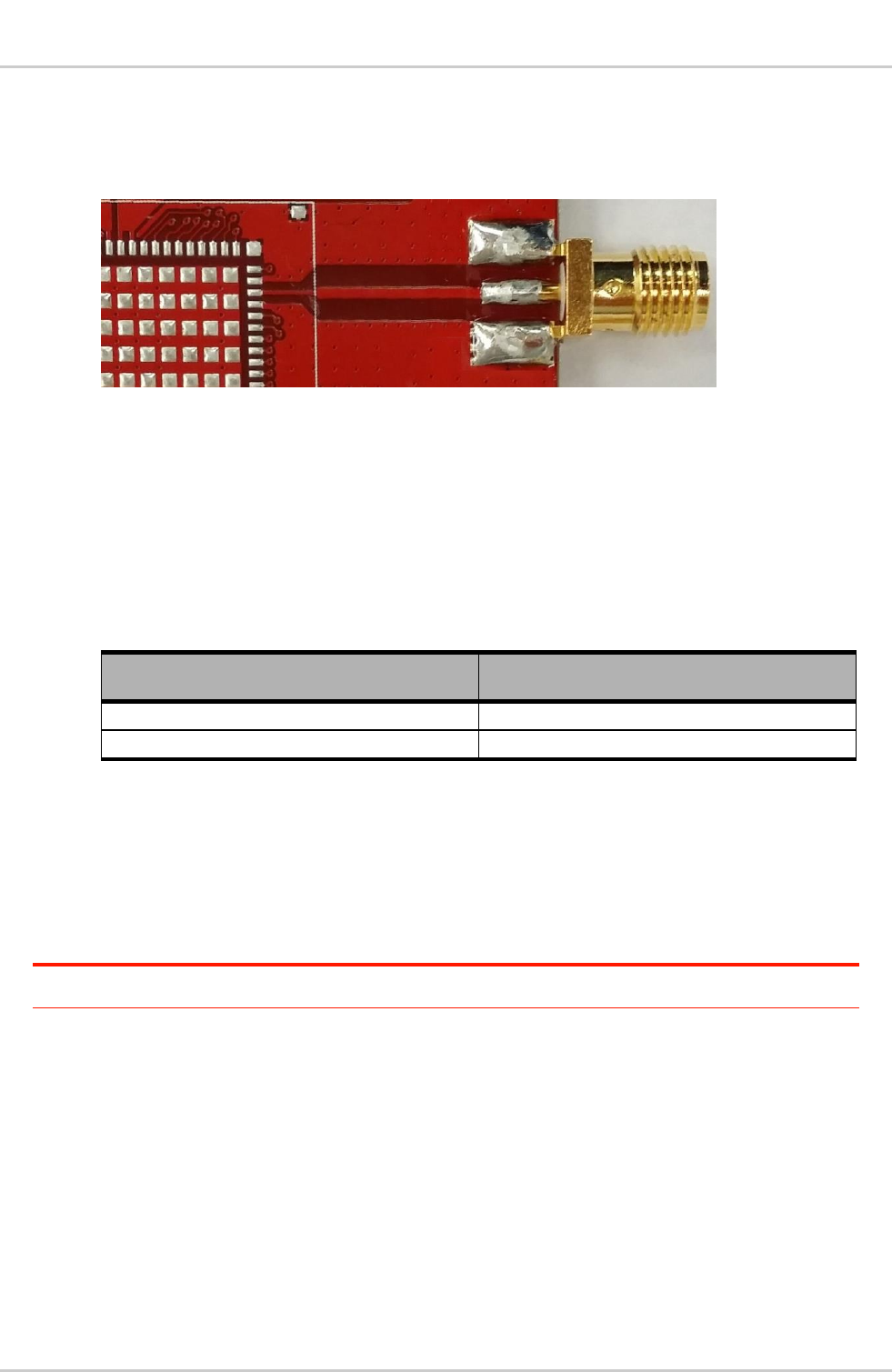
41110555 Rev 1.0 November 01, 2017 50
Product Technical Specification
FCC Legal Information
If a multi-layered PCB is used, the RF path on the board must not cross any signal (digital,
analog or supply).
If necessary, use StripLine structure and route the digital line(s) "outside" the RF structure. An
example of proper routing is shown in the figure below.
Stripline and Coplanar design requires having a correct ground plane at both sides.
Consequently, it is necessary to add some vias along the RF path. It is recommended to use
Stripline design if the RF path is fairly long (more than 3cm), since MicroStrip design is not
shielded. Consequently, the RF signal (when transmitting) may interfere with neighbouring
electronics (AF amplifier, etc.). In the same way, the neighbouring electronics (micro-
controllers, etc.) may degrade the reception performances. The GSM/GPRS connector is
intended to be directly connected to a 50Ω antenna and no matching is needed.
5. A label must be affixed to the outside of the end product into which the HL7718 or HL7748
module is incorporated, with a statement similar to the following:
This device contains FCC ID: <FCC ID as listed in the table below>
Embedded Module
FCC ID
HL7718
N7NHL7718
HL7748
N7NHL7748
6. A user manual with the end product must clearly indicate the operating requirements and
conditions that must be observed to ensure compliance with current FCC RF exposure
guidelines.
The end product with an embedded HL7718 or HL7748 module may also need to pass the FCC Part
15 unintentional emission testing requirements and be properly authorized per FCC Part 15.
Note: If this module is intended for use in a portable device, you are responsible for separate approval to
satisfy the SAR requirements of FCC Part 2.1093.

41110555 Rev 1.0 November 01, 2017 51
8. Ordering Information
Table 45. Ordering Information
Model Name
Description
Part Number
HL7718
HL7718 embedded module
Contact Sierra Wireless for the latest SKU
HL7748
HL7748 embedded module
Contact Sierra Wireless for the latest SKU
HL7749
HL7749 embedded module
Contact Sierra Wireless for the latest SKU
DEV-KIT
HL Series Development Kit
6000620
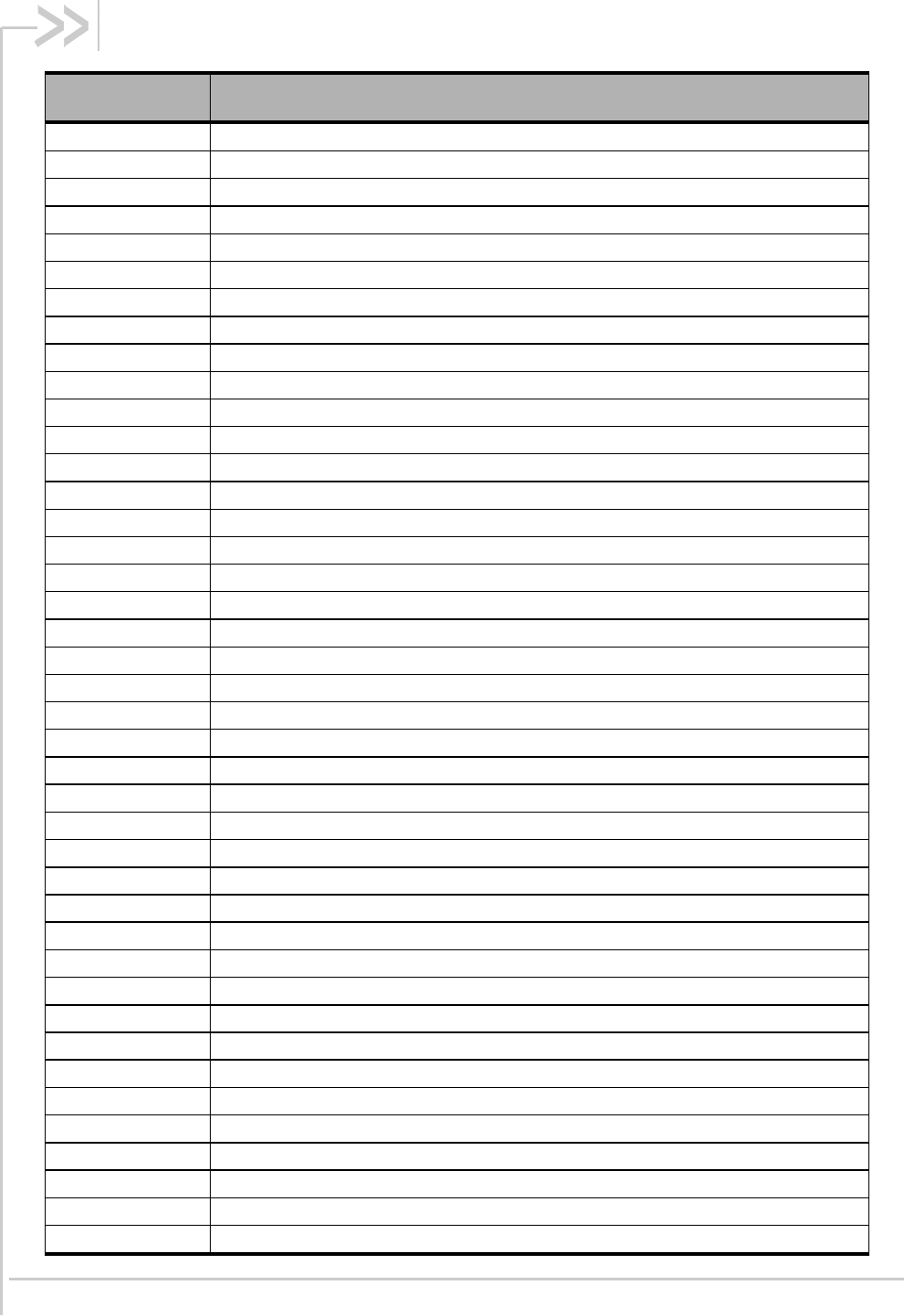
41110555 Rev 1.0 November 01, 2017 52
9. Terms and Abbreviations
Abbreviation
Definition
ADC
Analog to Digital Converter
AGC
Automatic Gain Control
AT
Attention (prefix for modem commands)
CDMA
Code Division Multiple Access
CF3
Common Flexible Form Factor
CLK
Clock
CODEC
Coder Decoder
CPU
Central Processing Unit
DAC
Digital to Analog Converter
DTR
Data Terminal Ready
EGNOS
European Geostationary Navigation Overlay Service
EMC
Electro-Magnetic Compatibility
EMI
Electro-Magnetic Interference
EN
Enable
ESD
Electro-Static Discharges
ETSI
European Telecommunications Standards Institute
FDMA
Frequency-division multiple access
GAGAN
GPS aided geo augmented navigation
GLONASS
Global Navigation Satellite System
GND
Ground
GNSS
Global Navigation Satellite System
GPIO
General Purpose Input Output
GPRS
General Packet Radio Service
GSM
Global System for Mobile communications
Hi Z
High impedance (Z)
IC
Integrated Circuit
IMEI
International Mobile Equipment Identification
I/O
Input / Output
LED
Light Emitting Diode
LNA
Low Noise Amplifier
MAX
Maximum
MIN
Minimum
MSAS
Multi-functional Satellite Augmentation System
N/A
Not Applicable
PA
Power Amplifier
PC
Personal Computer
PCB
Printed Circuit Board
PCL
Power Control Level
PLL
Phase Lock Loop
PWM
Pulse Width Modulation
QZSS
Quasi-Zenith Satellite System

41110555 Rev 1.0 November 01, 2017 53
Product Technical Specification
Terms and Abbreviations
Abbreviation
Definition
RF
Radio Frequency
RFI
Radio Frequency Interference
RMS
Root Mean Square
RST
Reset
RTC
Real Time Clock
RX
Receive
SCL
Serial Clock
SDA
Serial Data
SIM
Subscriber Identification Module
SMD
Surface Mounted Device/Design
SPI
Serial Peripheral Interface
SW
Software
PSRAM
Pseudo Static RAM
TBC
To Be Confirmed
TBD
To Be Defined
TP
Test Point
TX
Transmit
TYP
Typical
UART
Universal Asynchronous Receiver-Transmitter
UICC
Universal Integrated Circuit Card
USB
Universal Serial Bus
UIM
User Identity Module
VBATT
Main Supply Voltage from Battery or DC adapter
VSWR
Voltage Standing Wave Ratio
WAAS
Wide Area Augmentation System